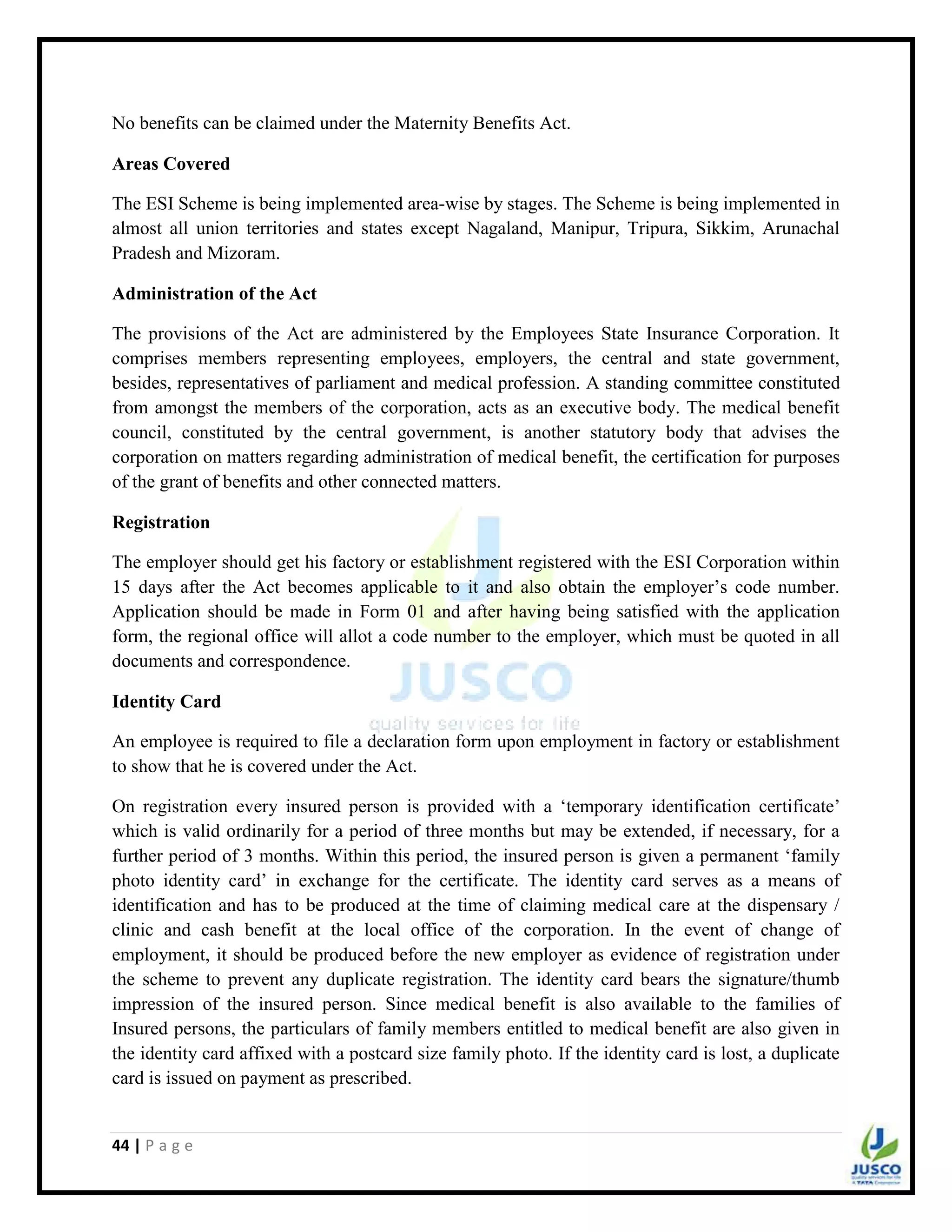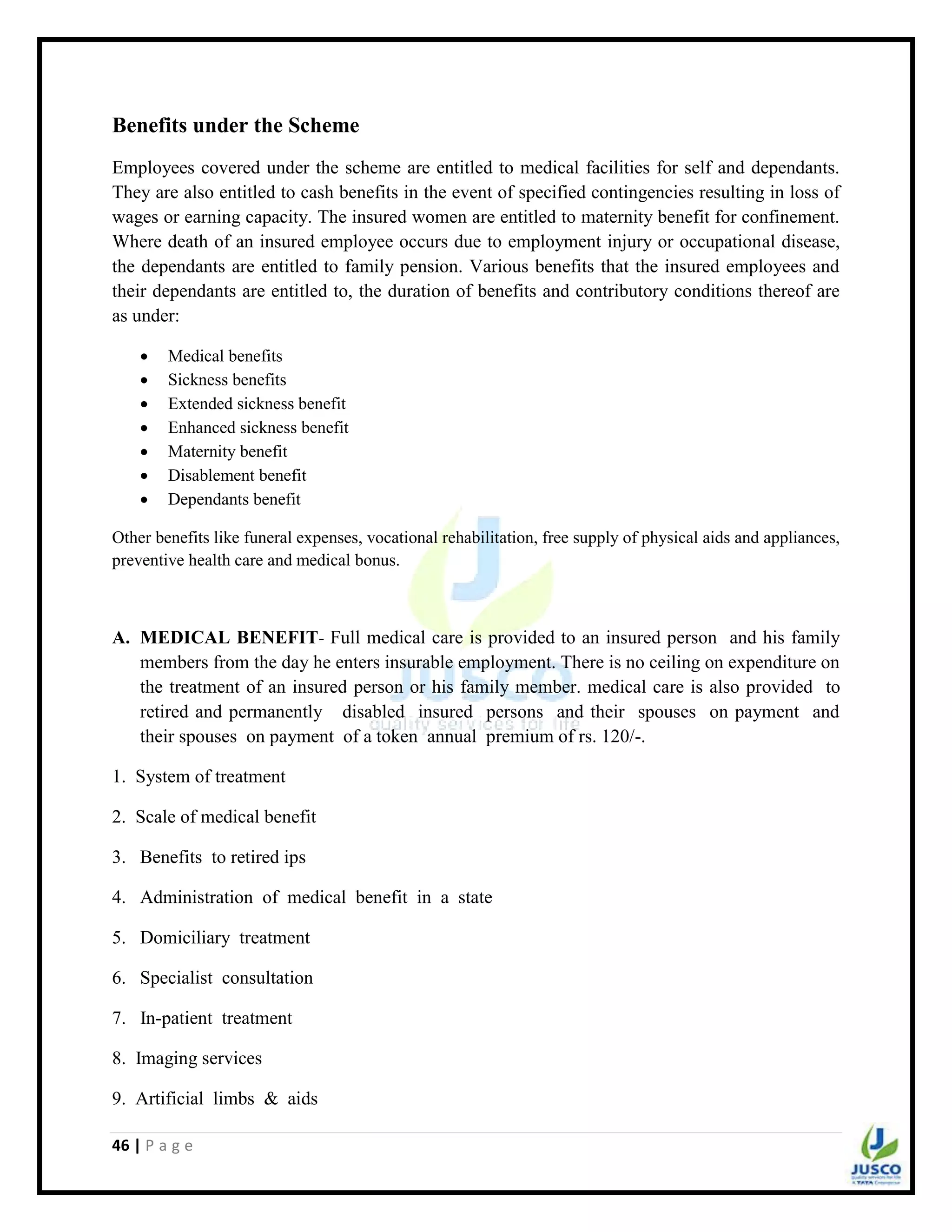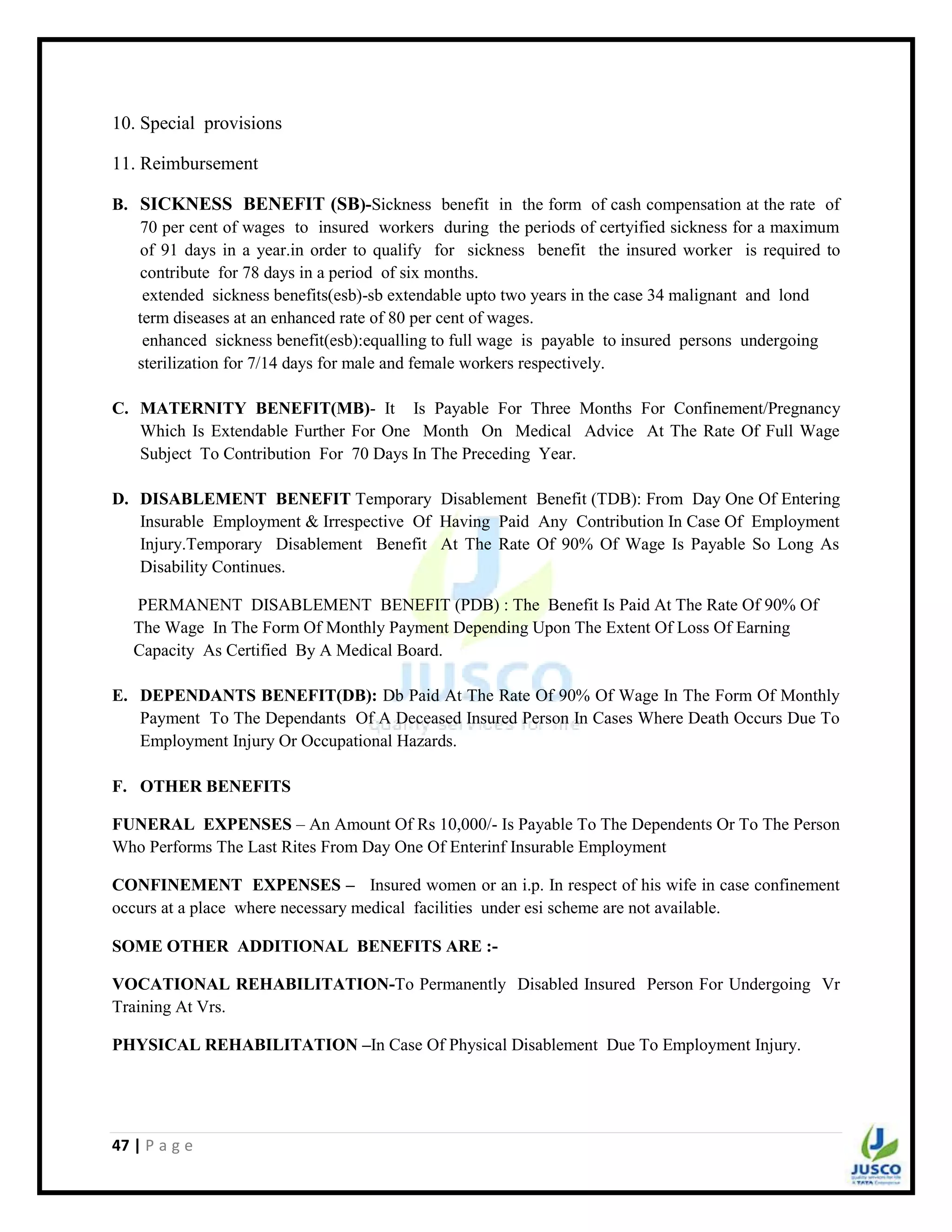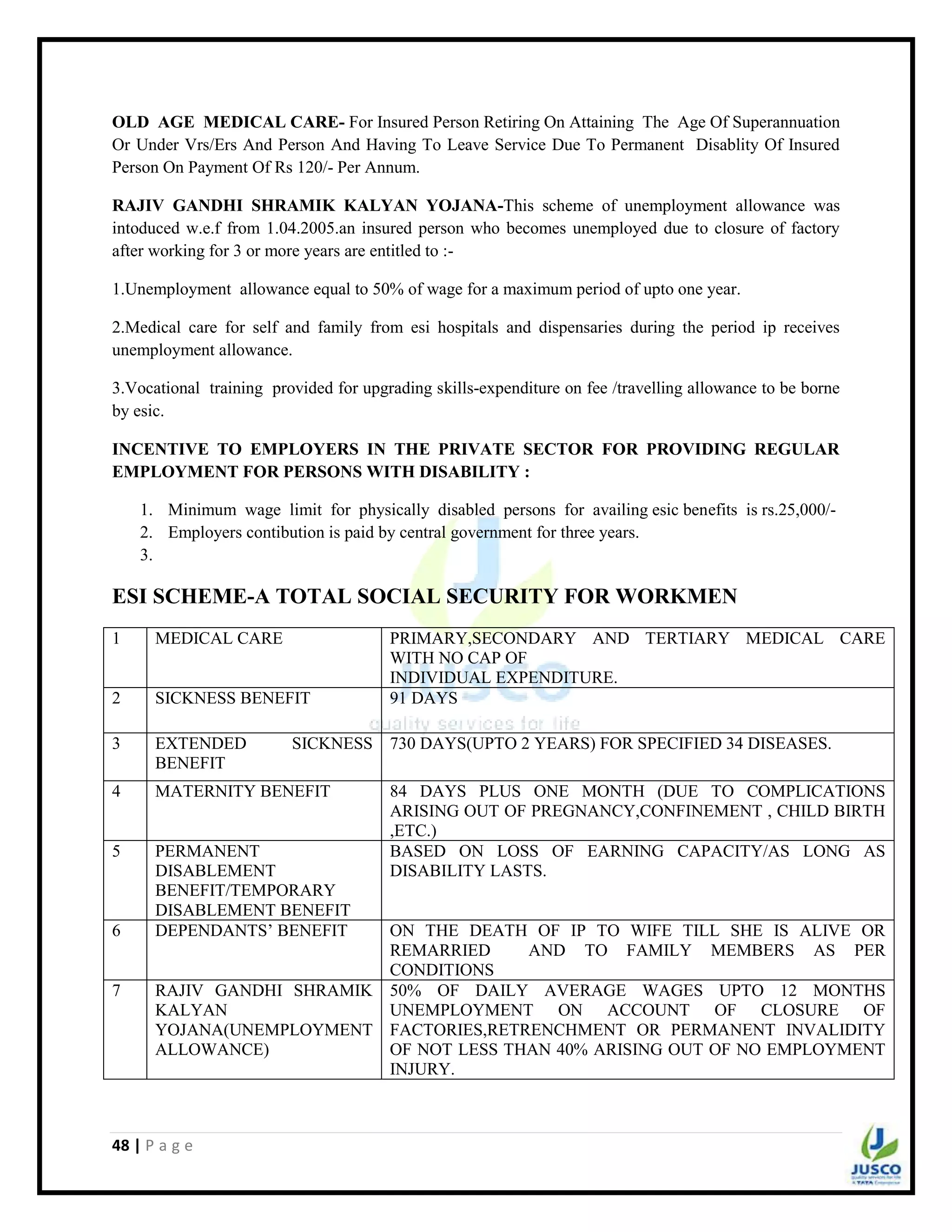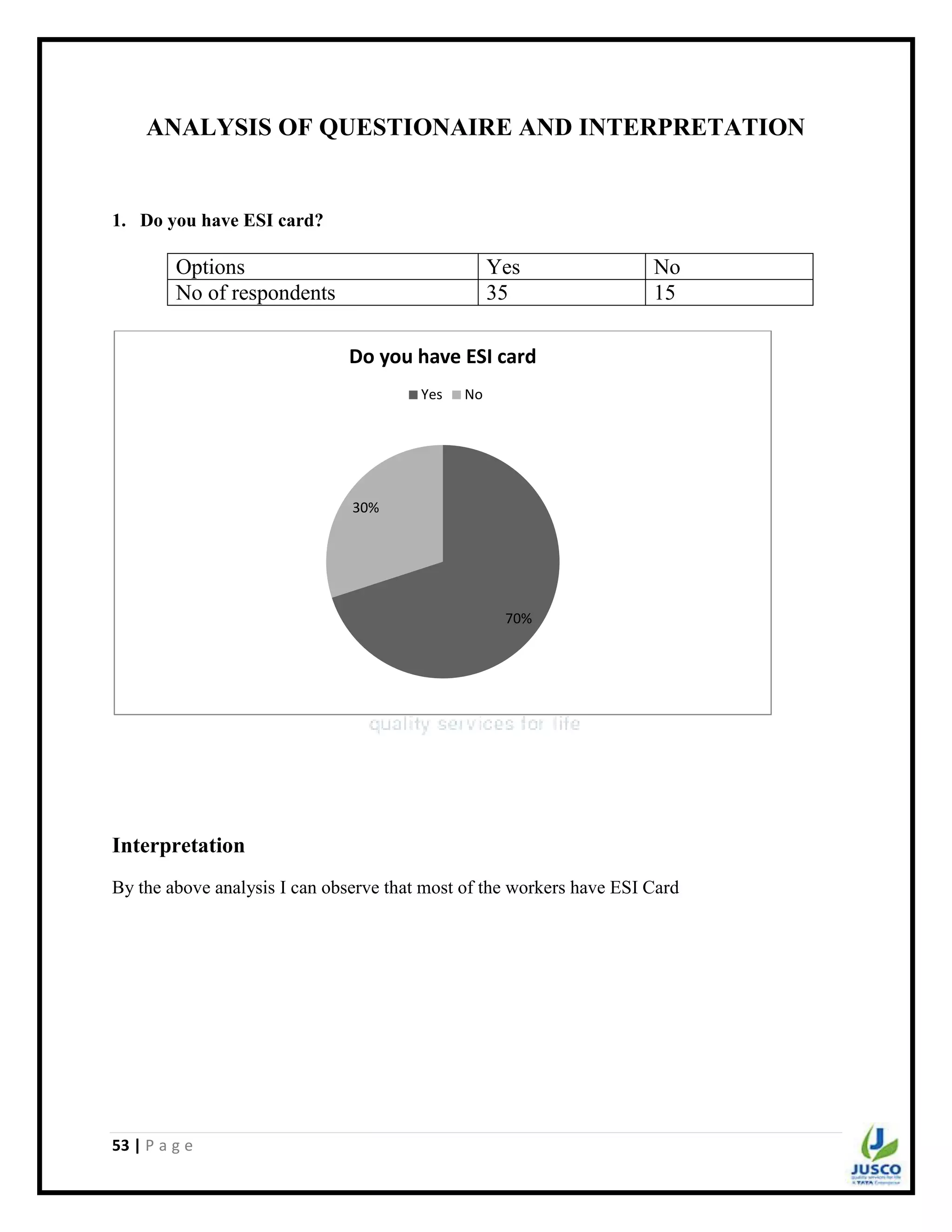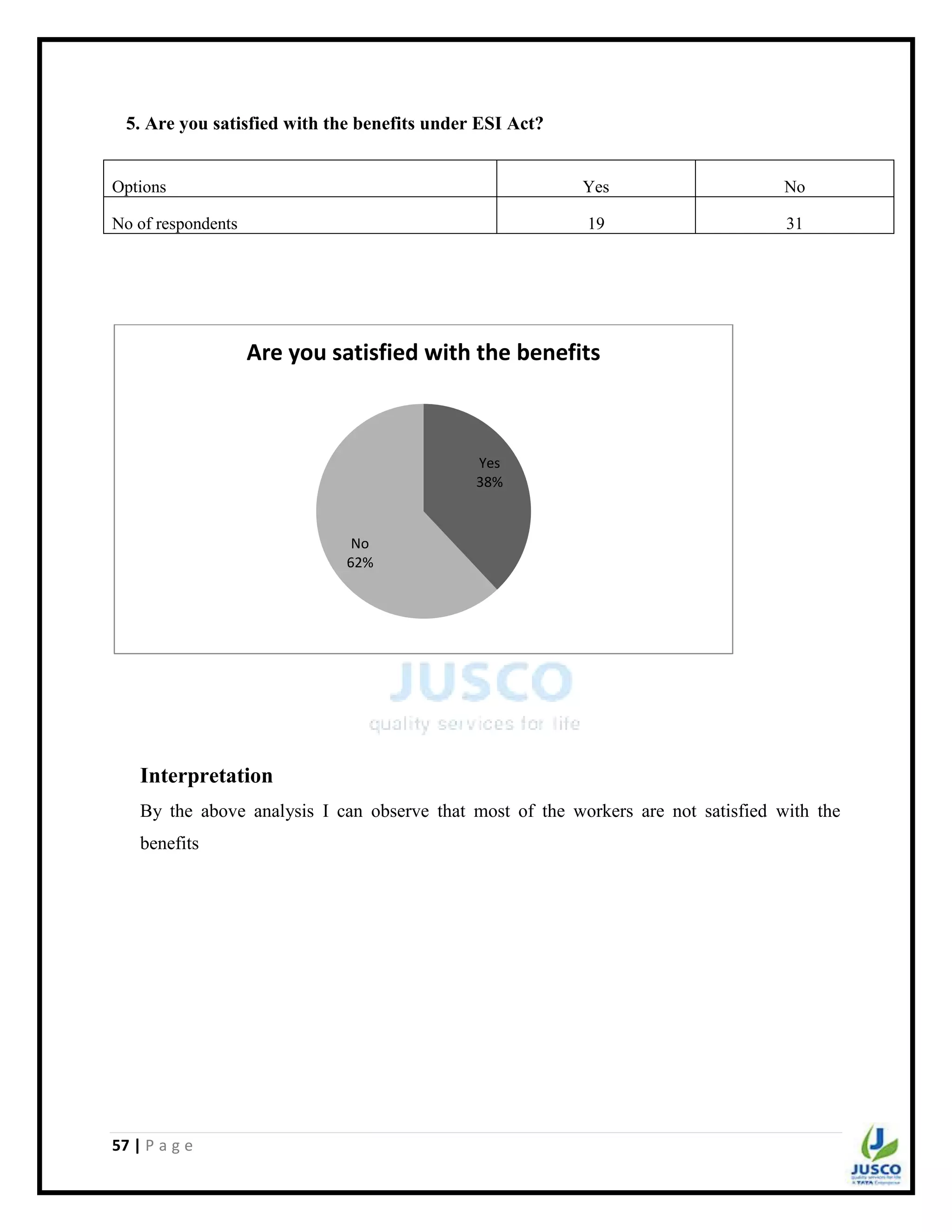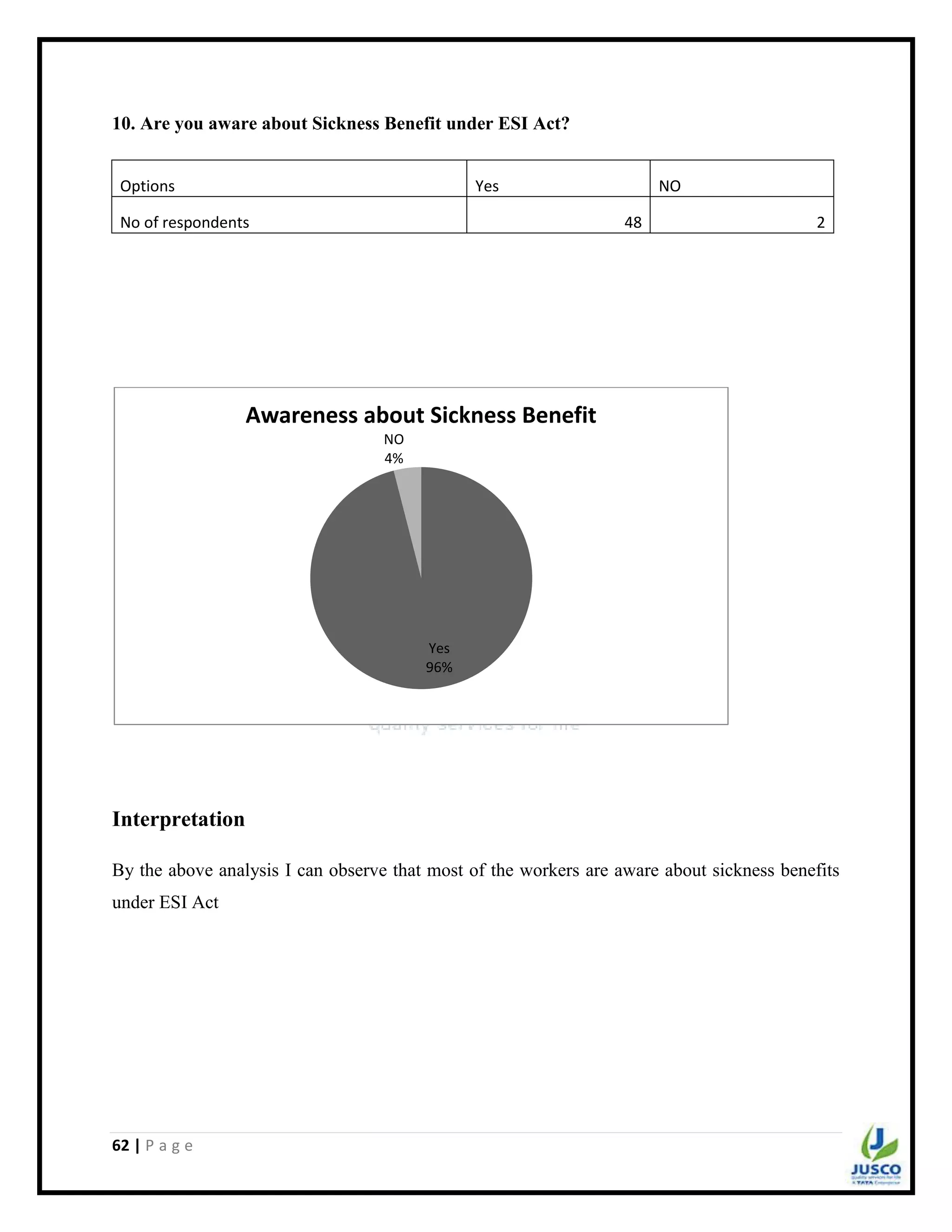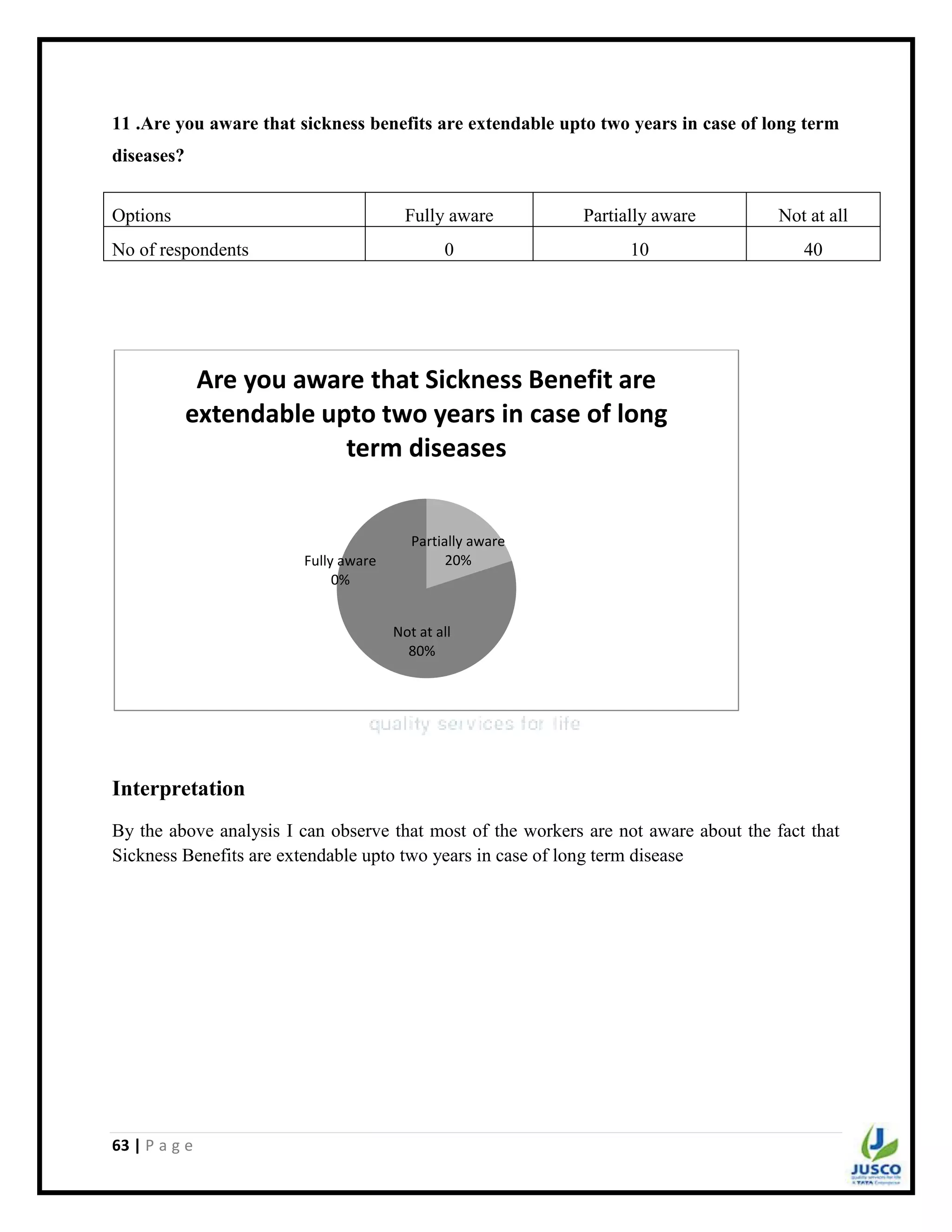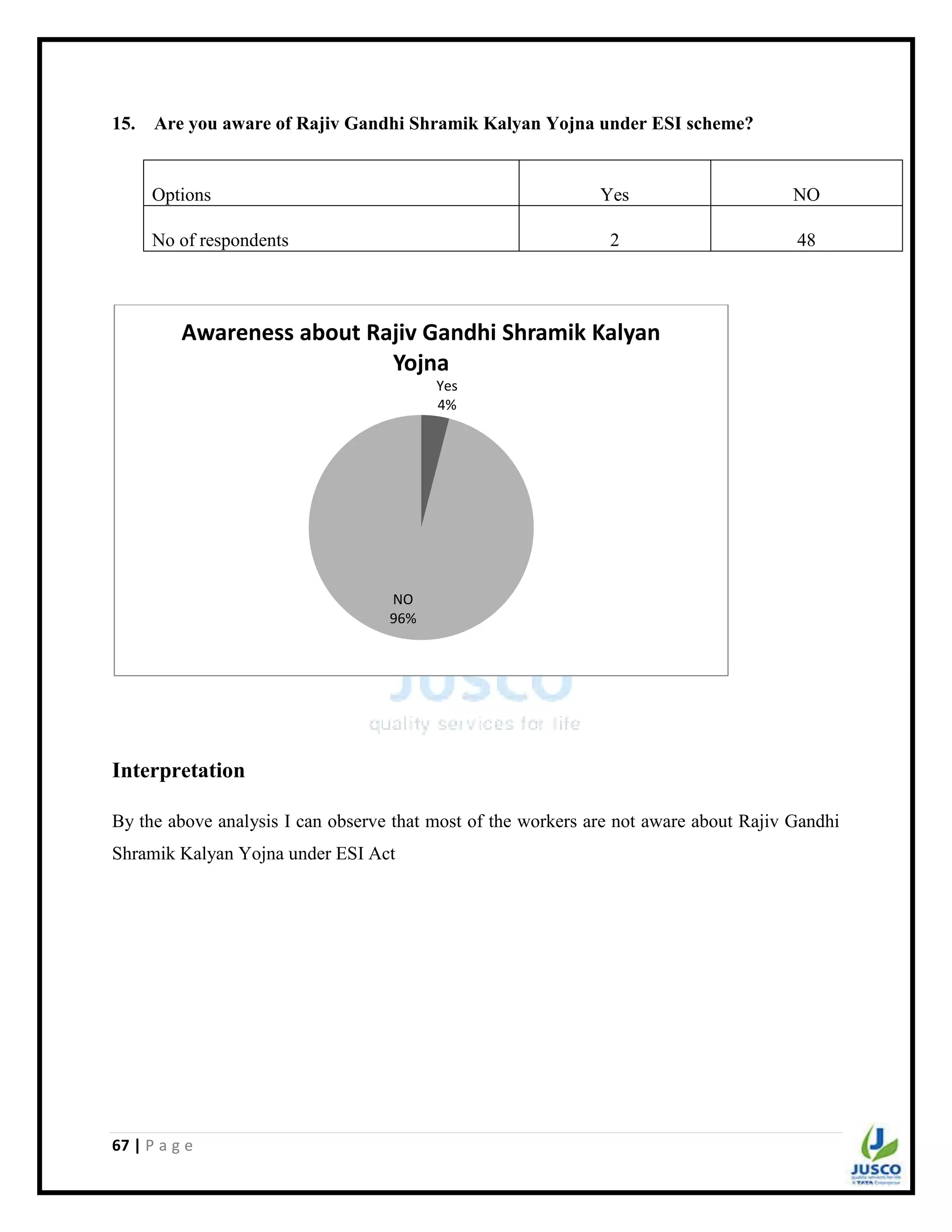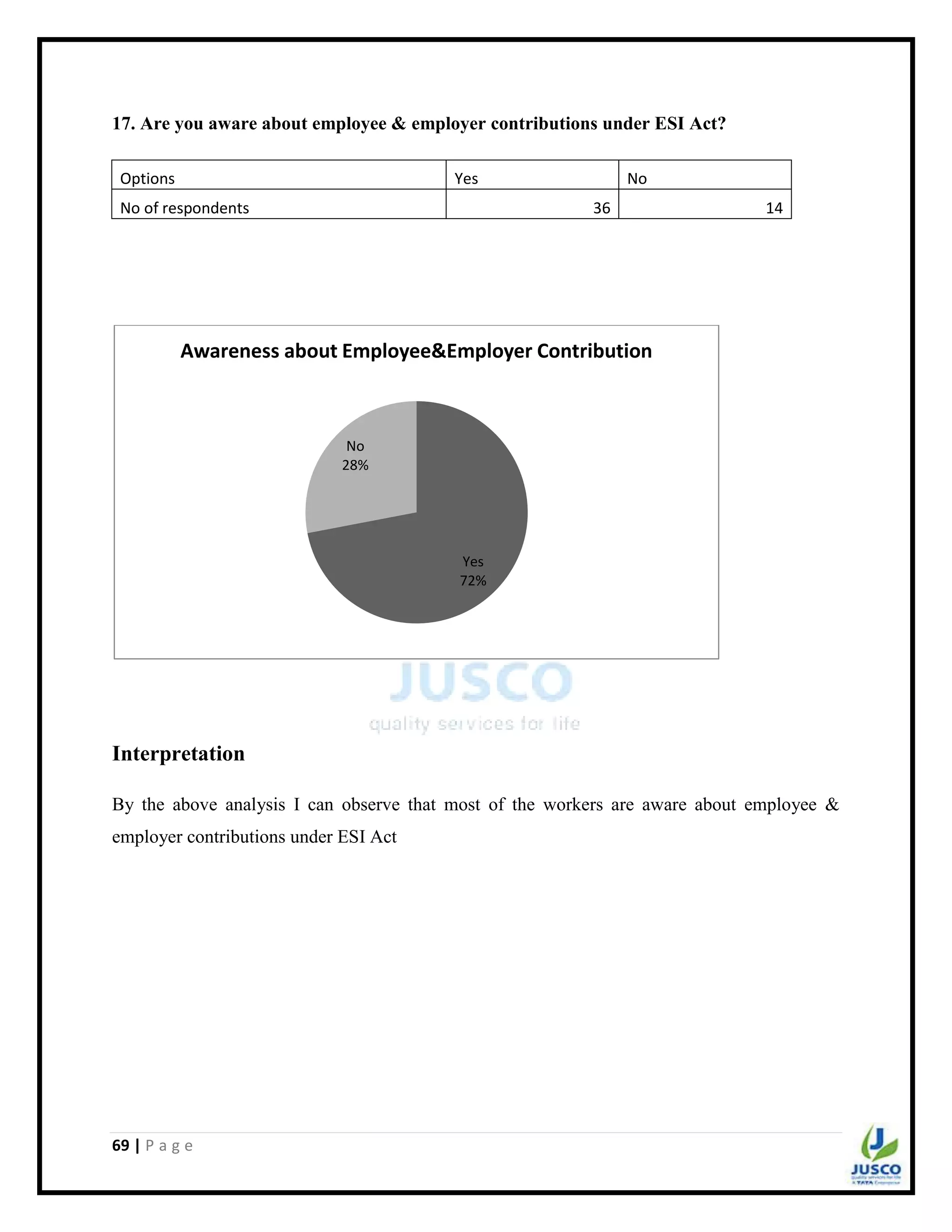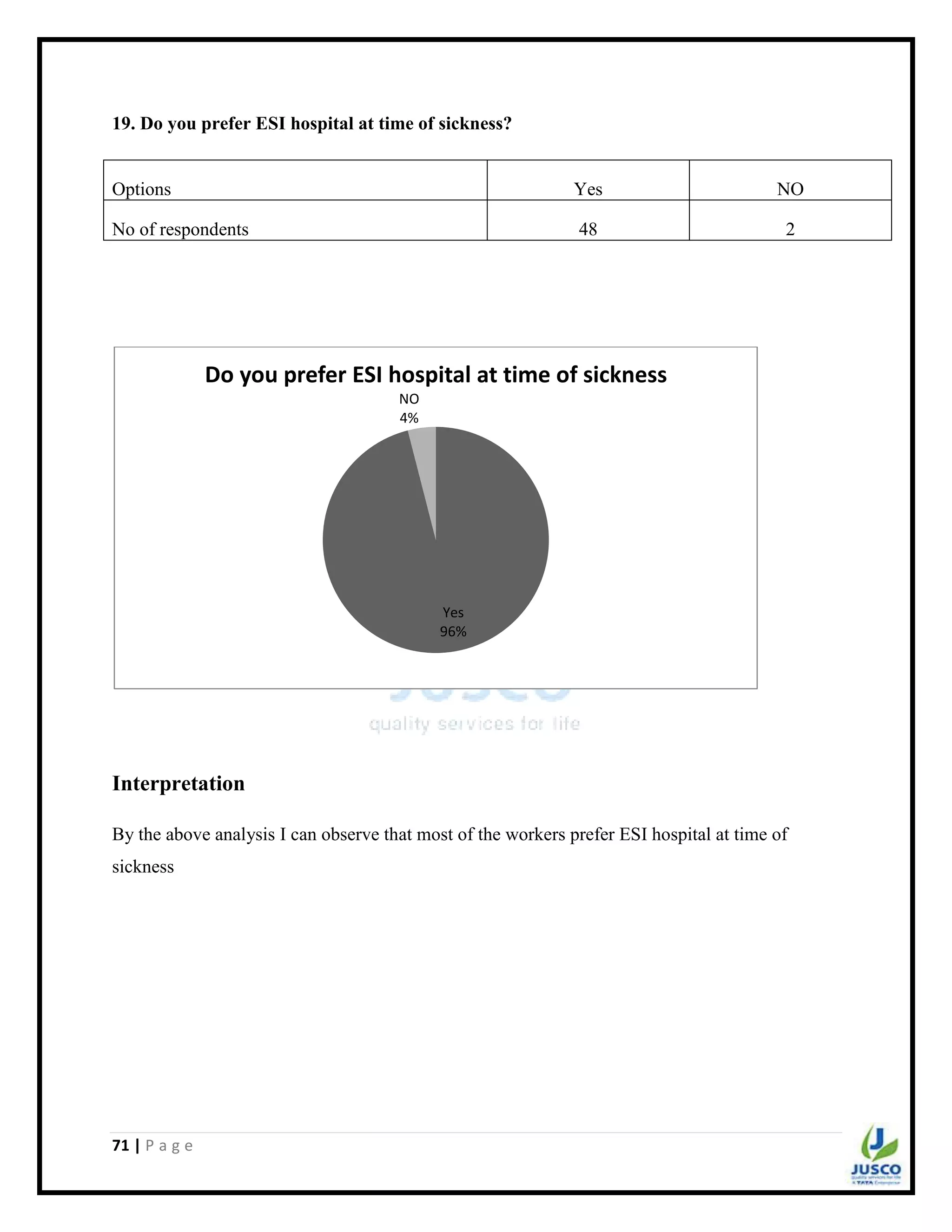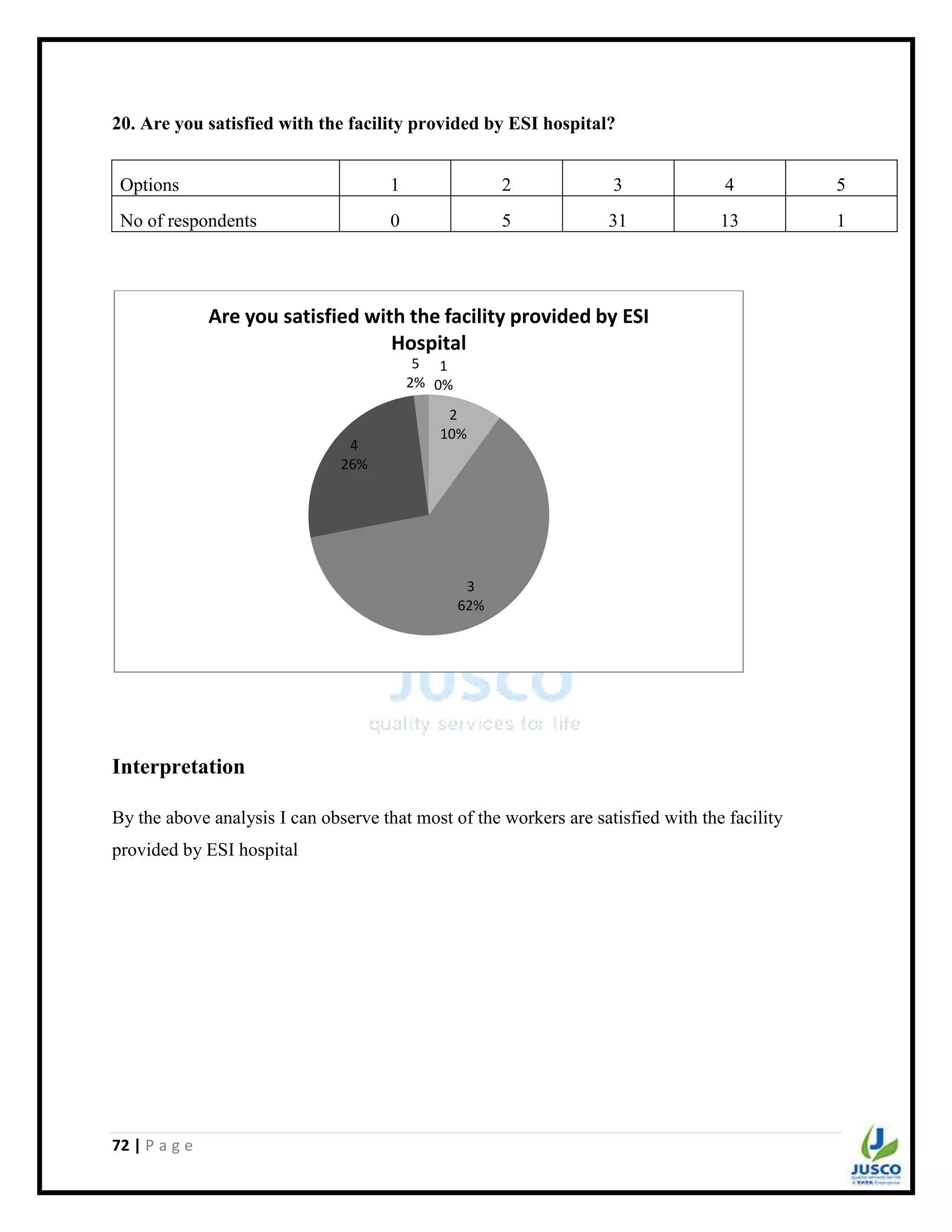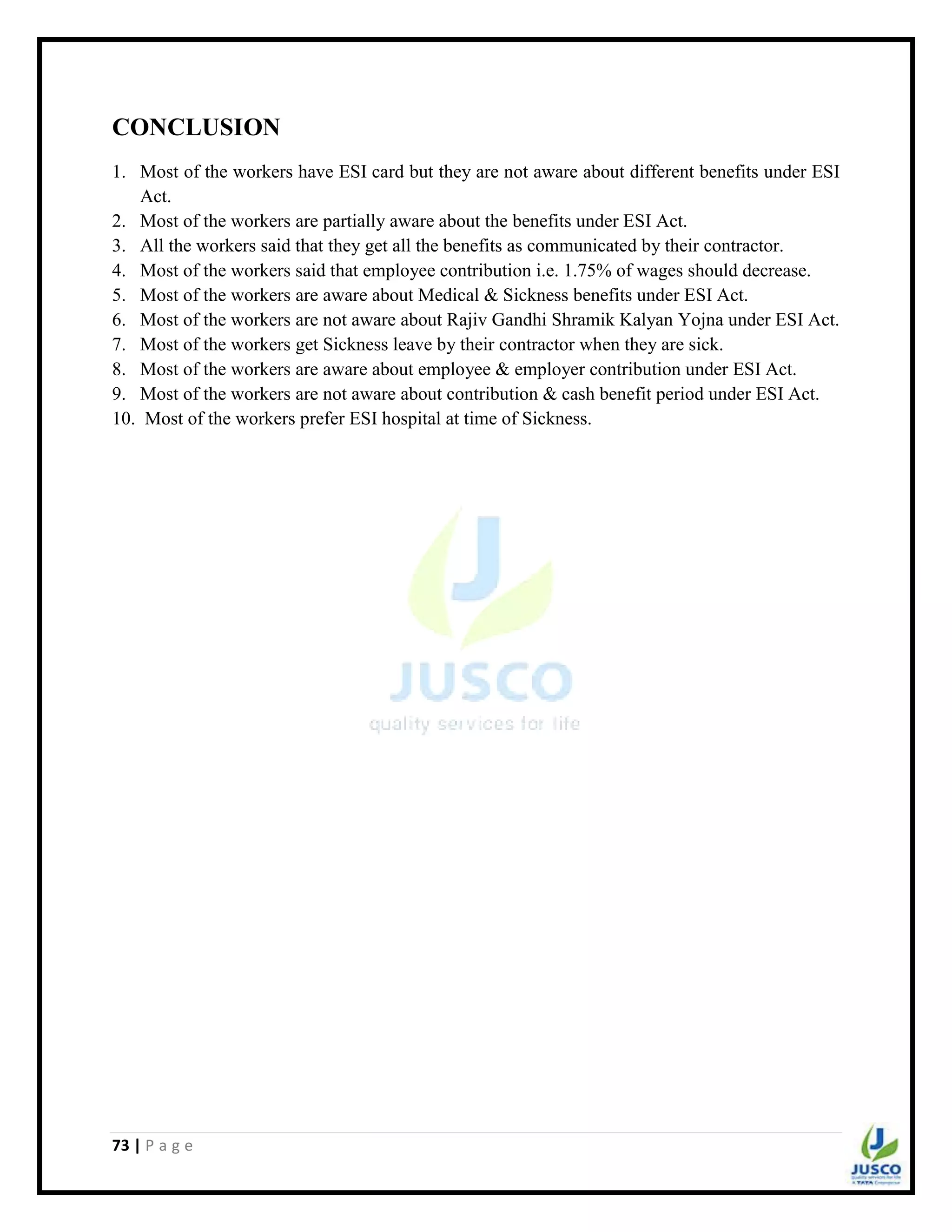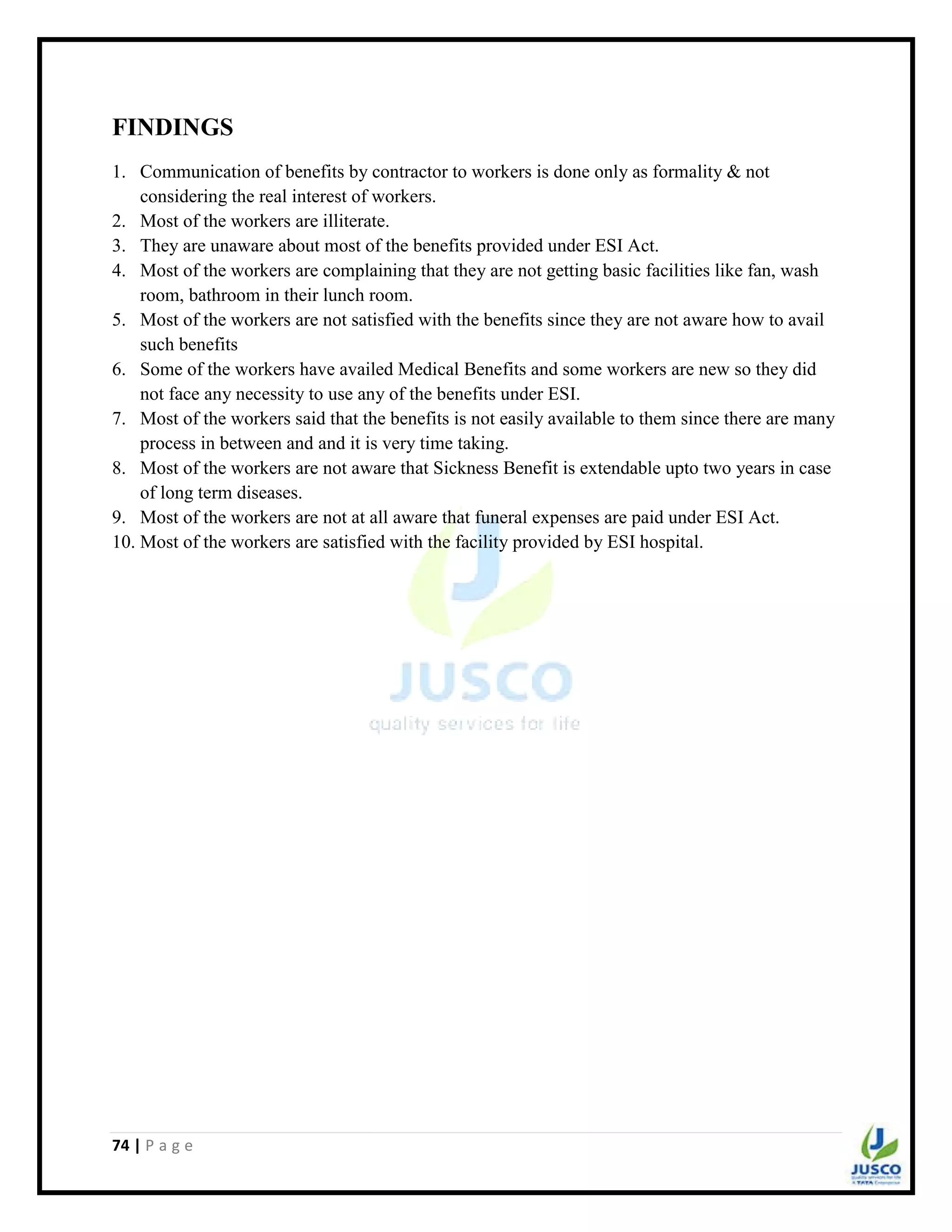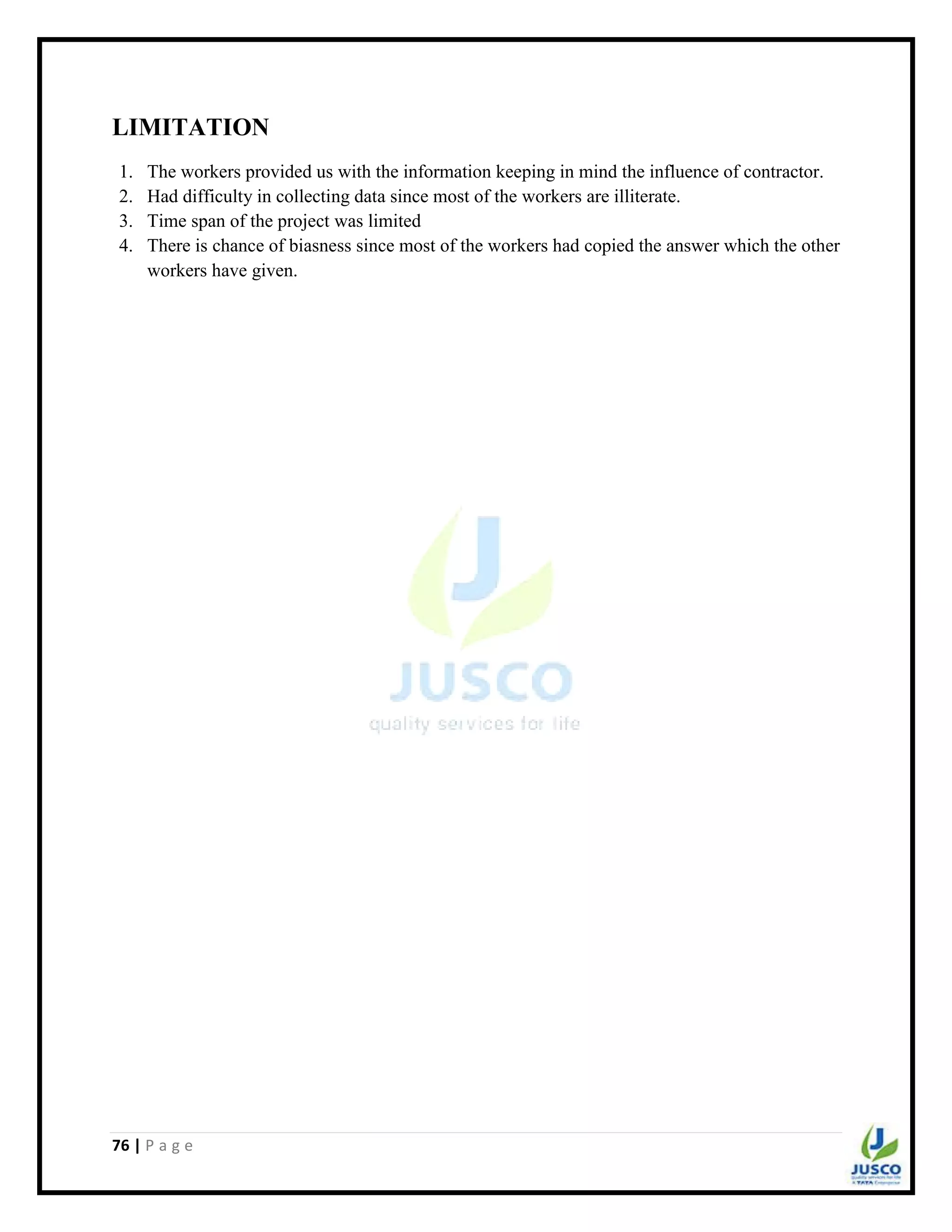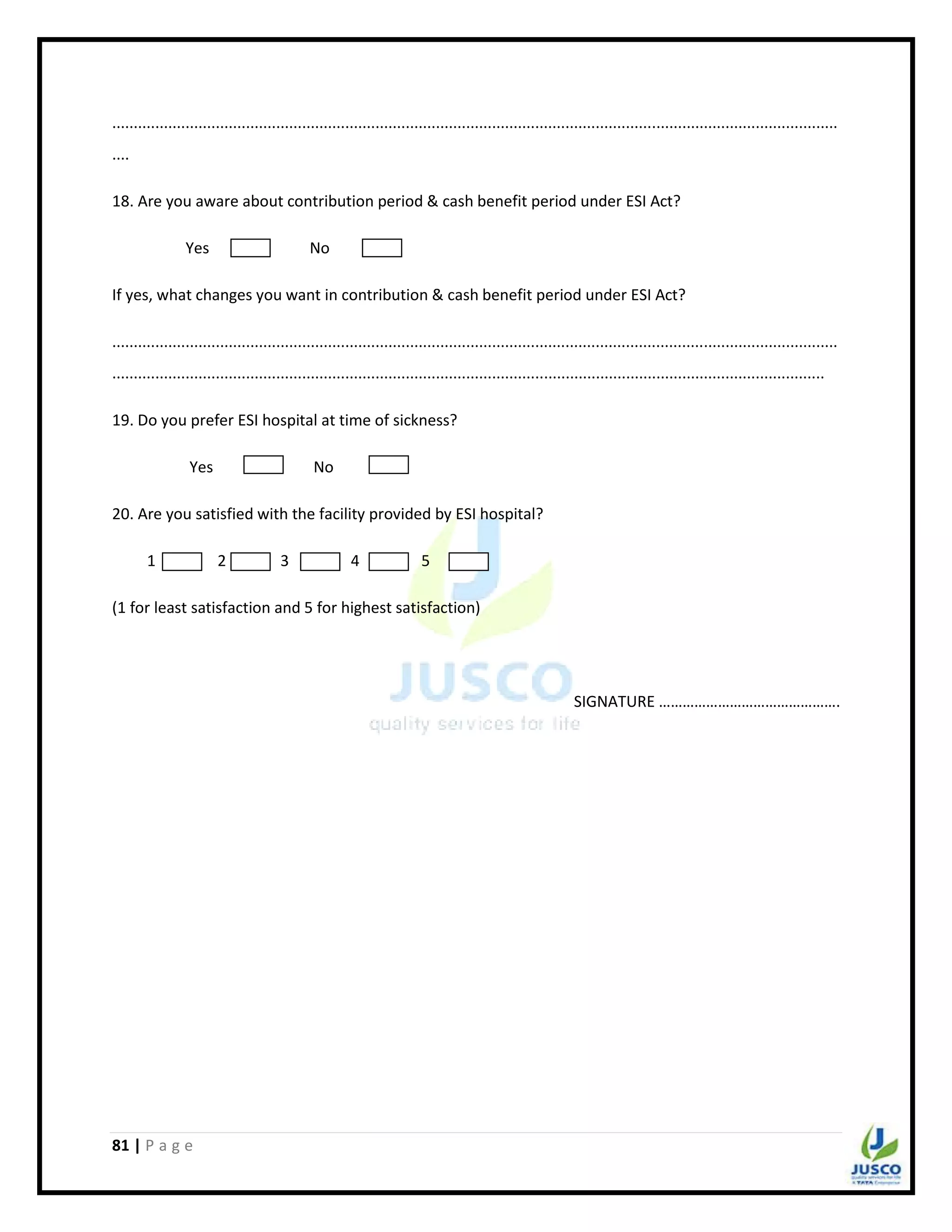This document provides an overview of Jamshedpur Utilities & Services Company Limited (JUSCO), including its organizational profile, services, departments, and operations. Key points:
- JUSCO is an urban infrastructure company that provides water, electricity, engineering, construction, and waste management services. It was carved out of Tata Steel in 2004.
- The company operates in 8 states across India and provides services like water distribution, power distribution, municipal solid waste management, and construction projects.
- JUSCO maintains critical urban infrastructure in Jamshedpur like roads, sewer lines, water pipelines, drains, parks, and schools. It has over 1,000 employees across various departments.
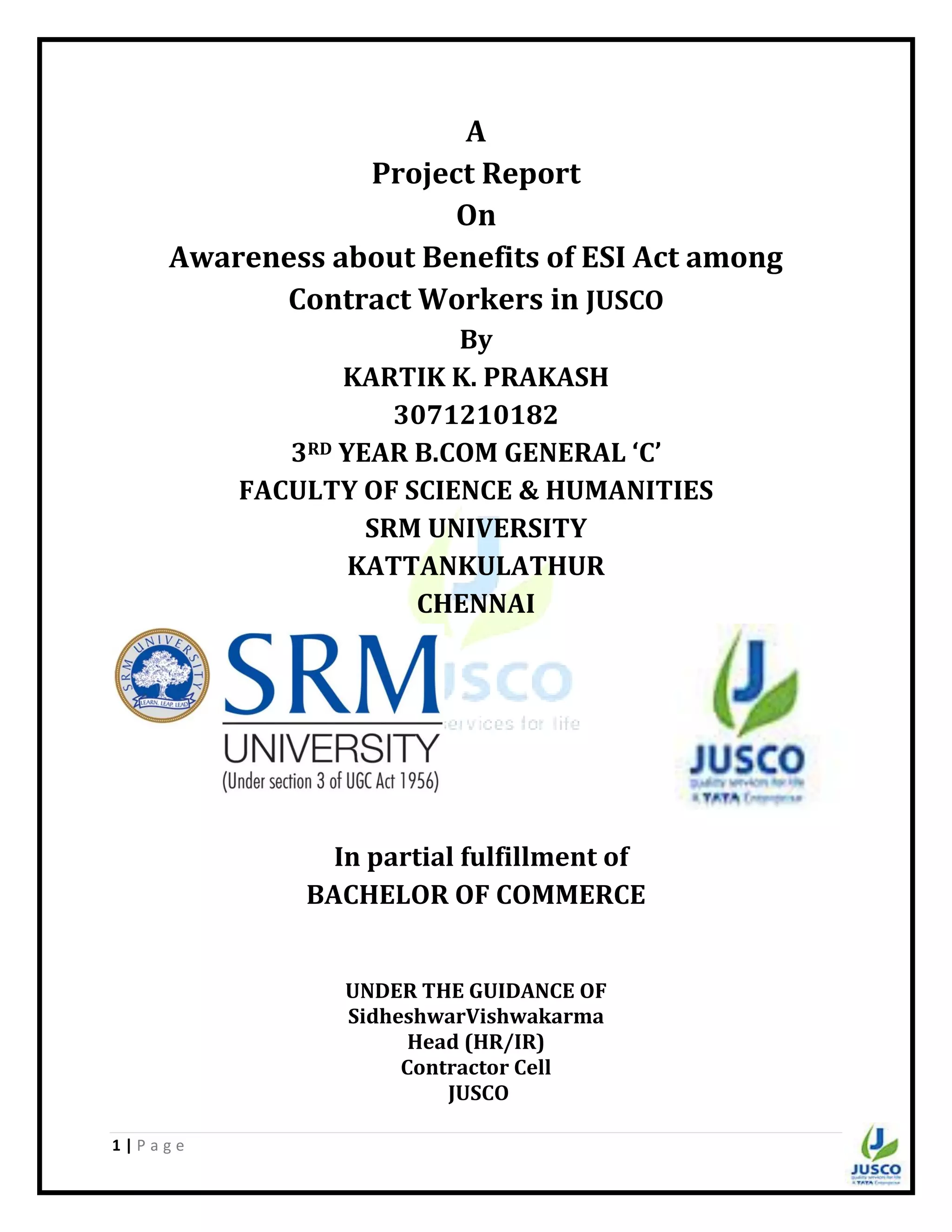
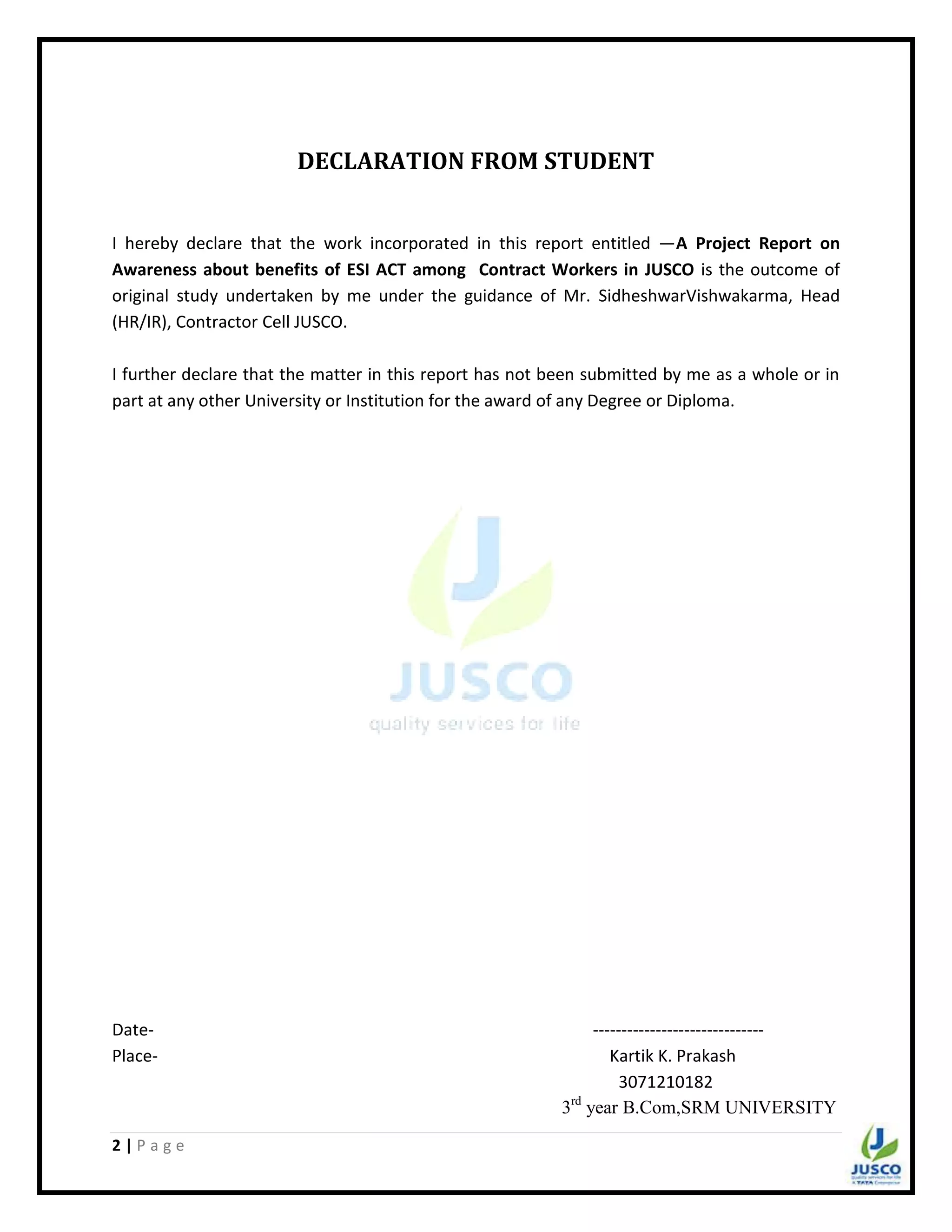
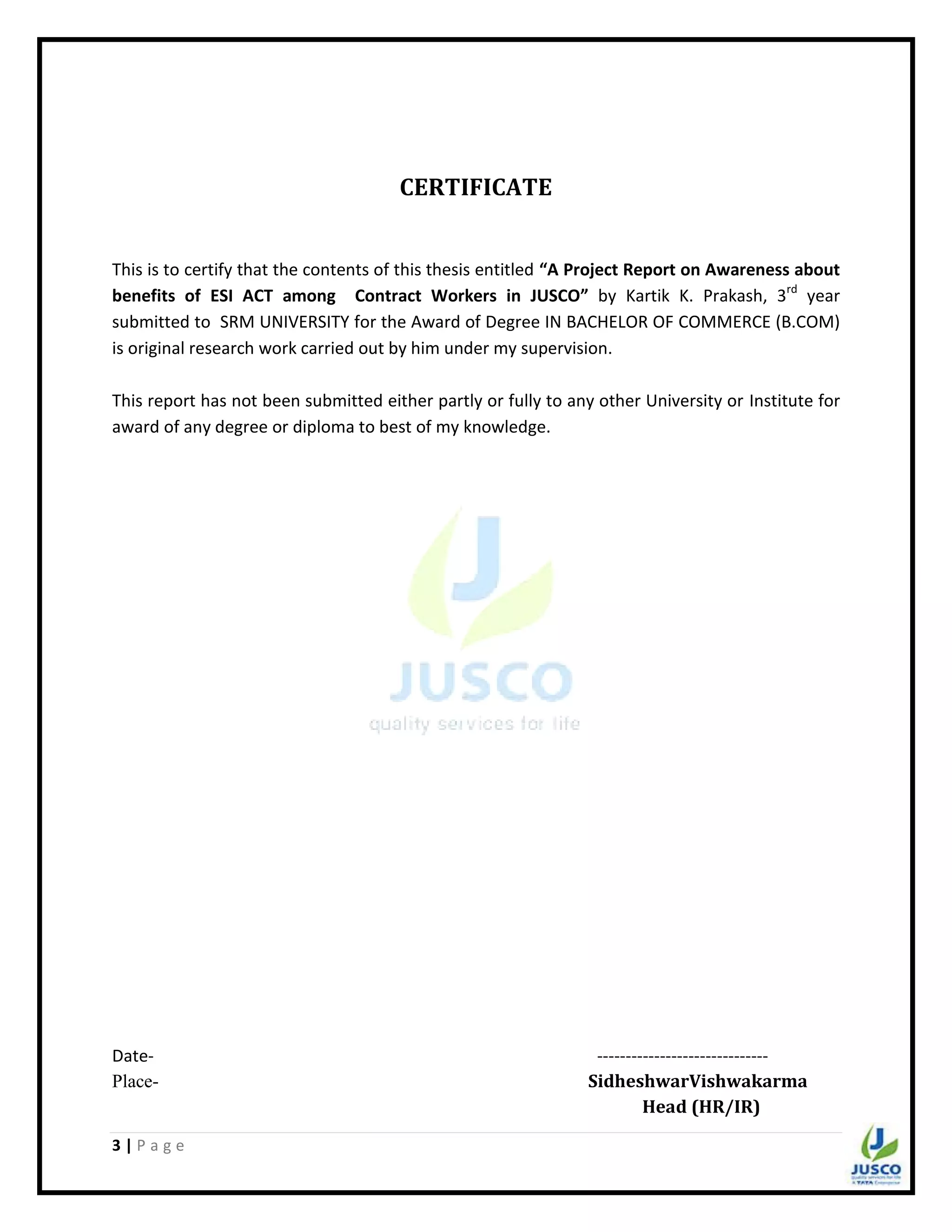
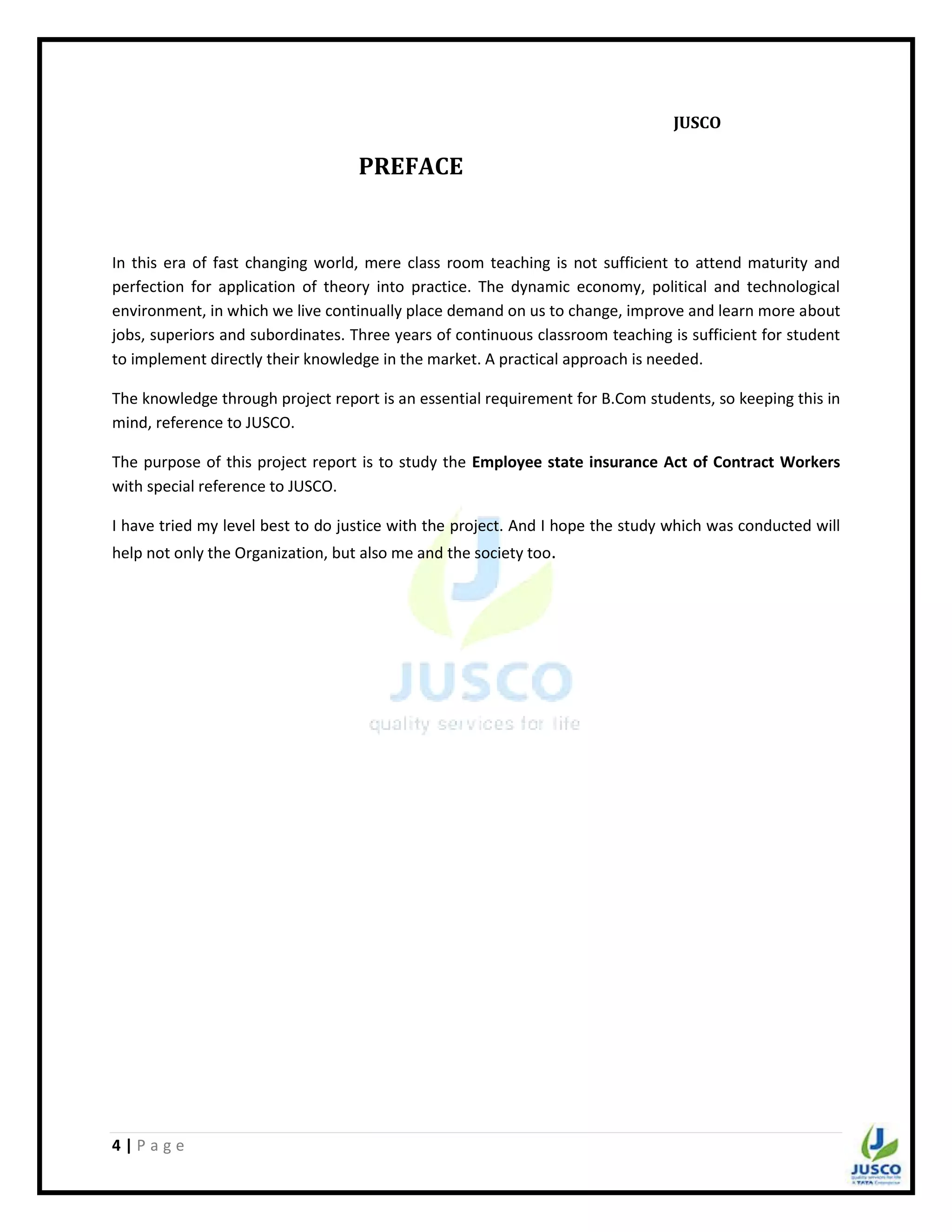
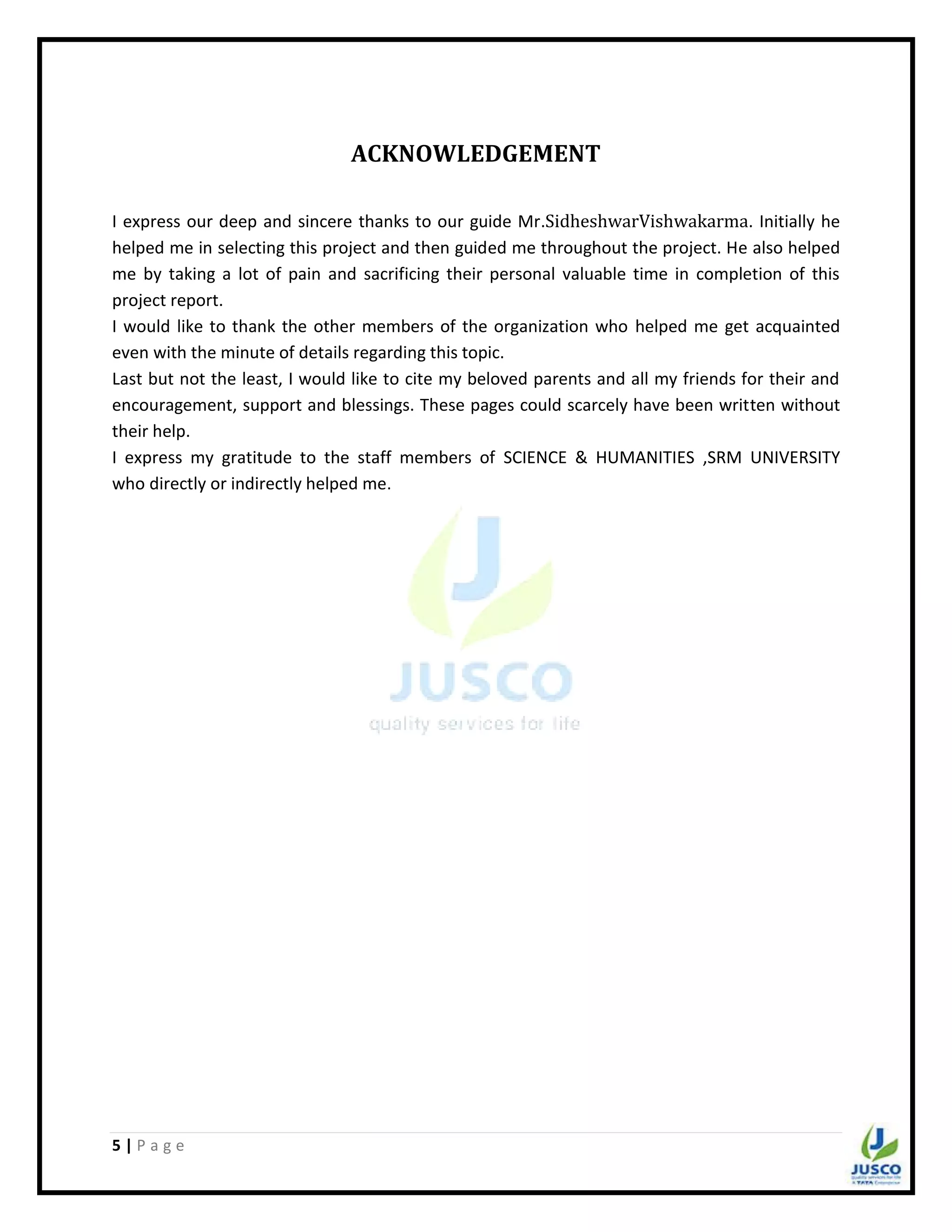
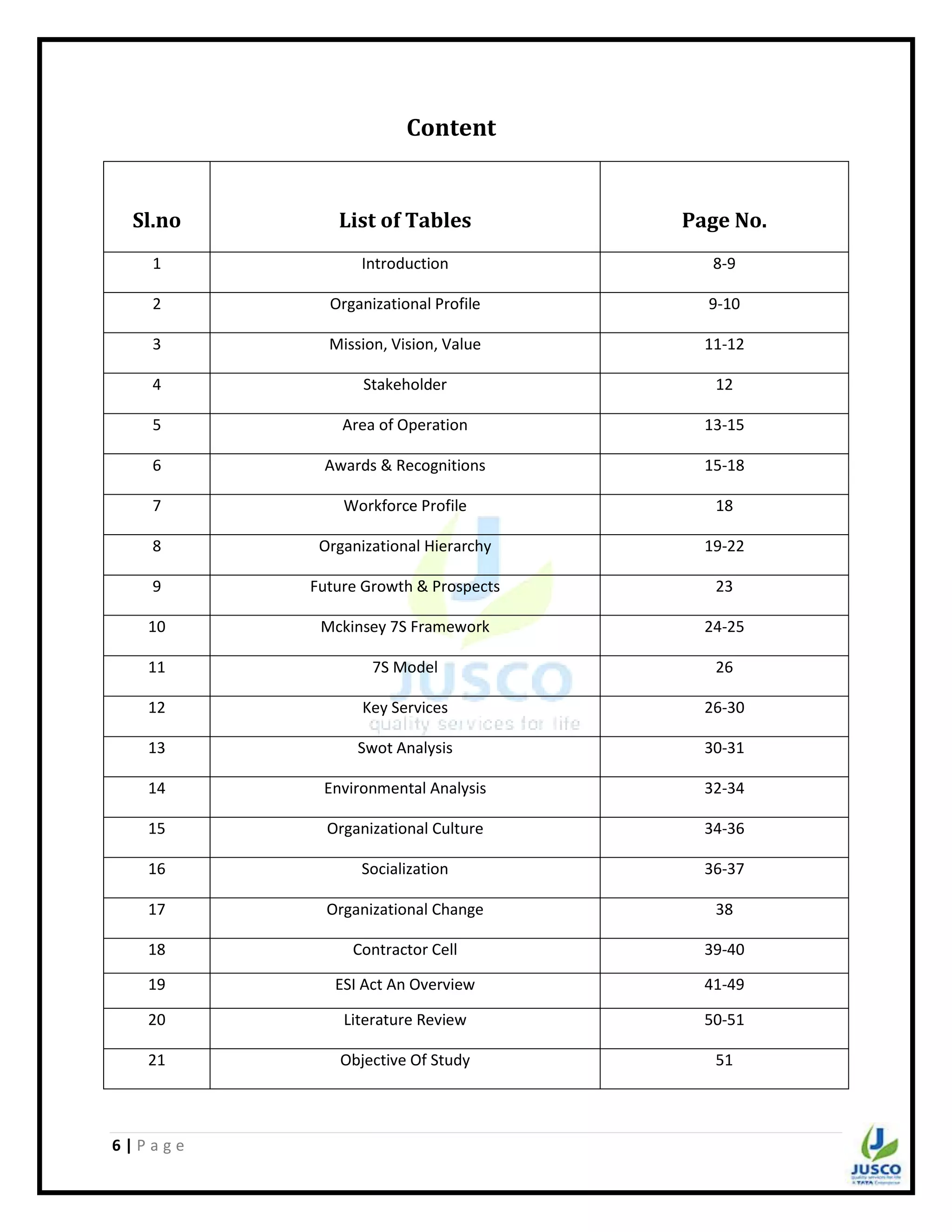
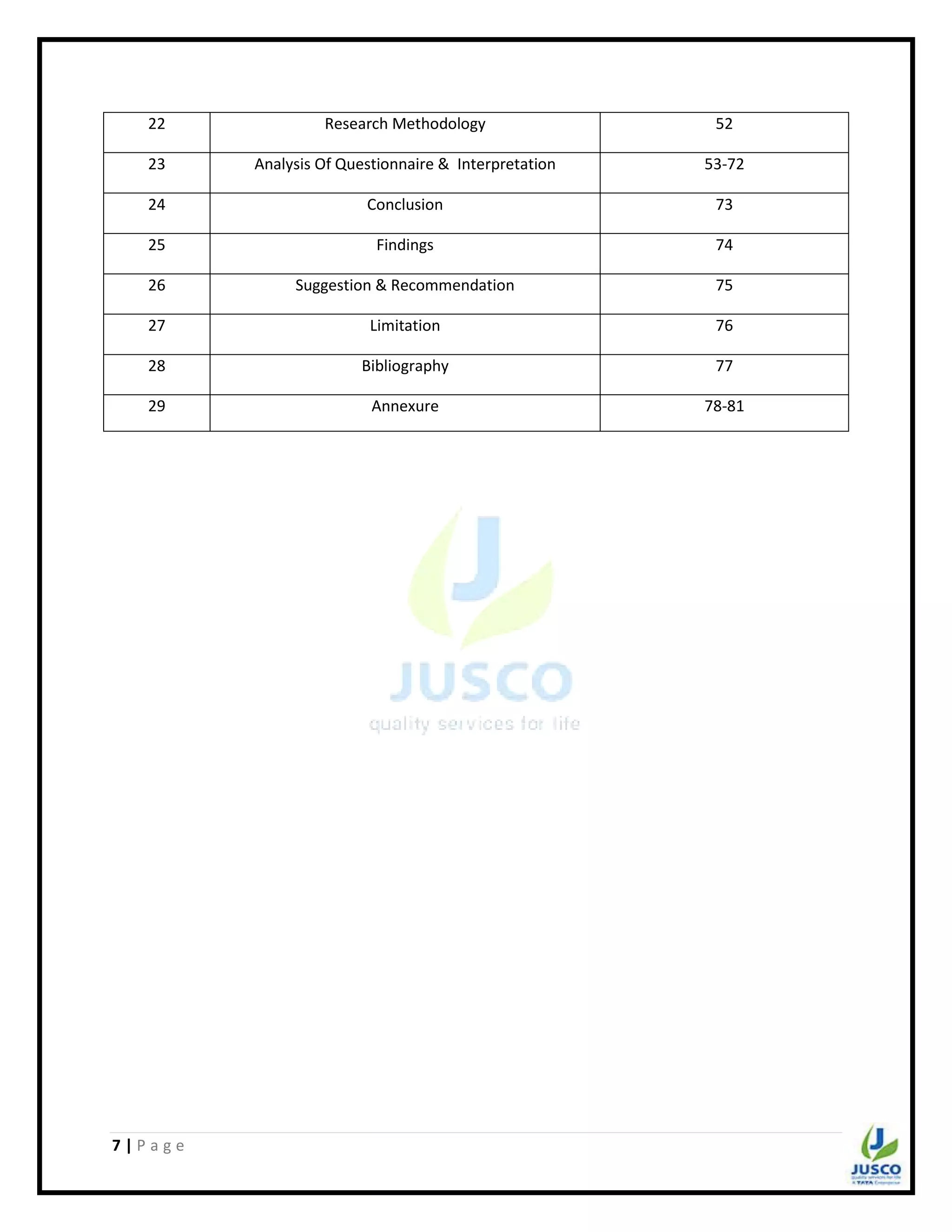
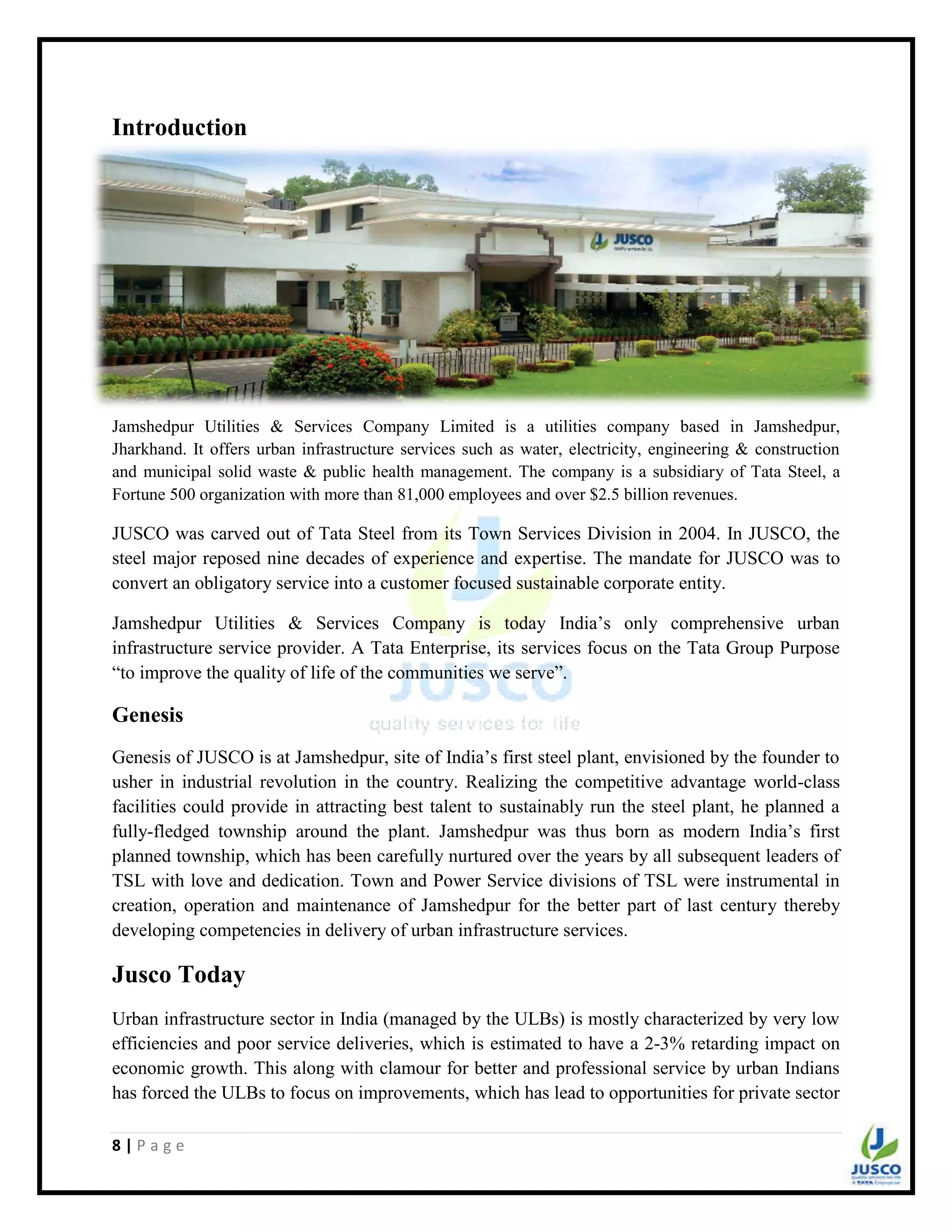
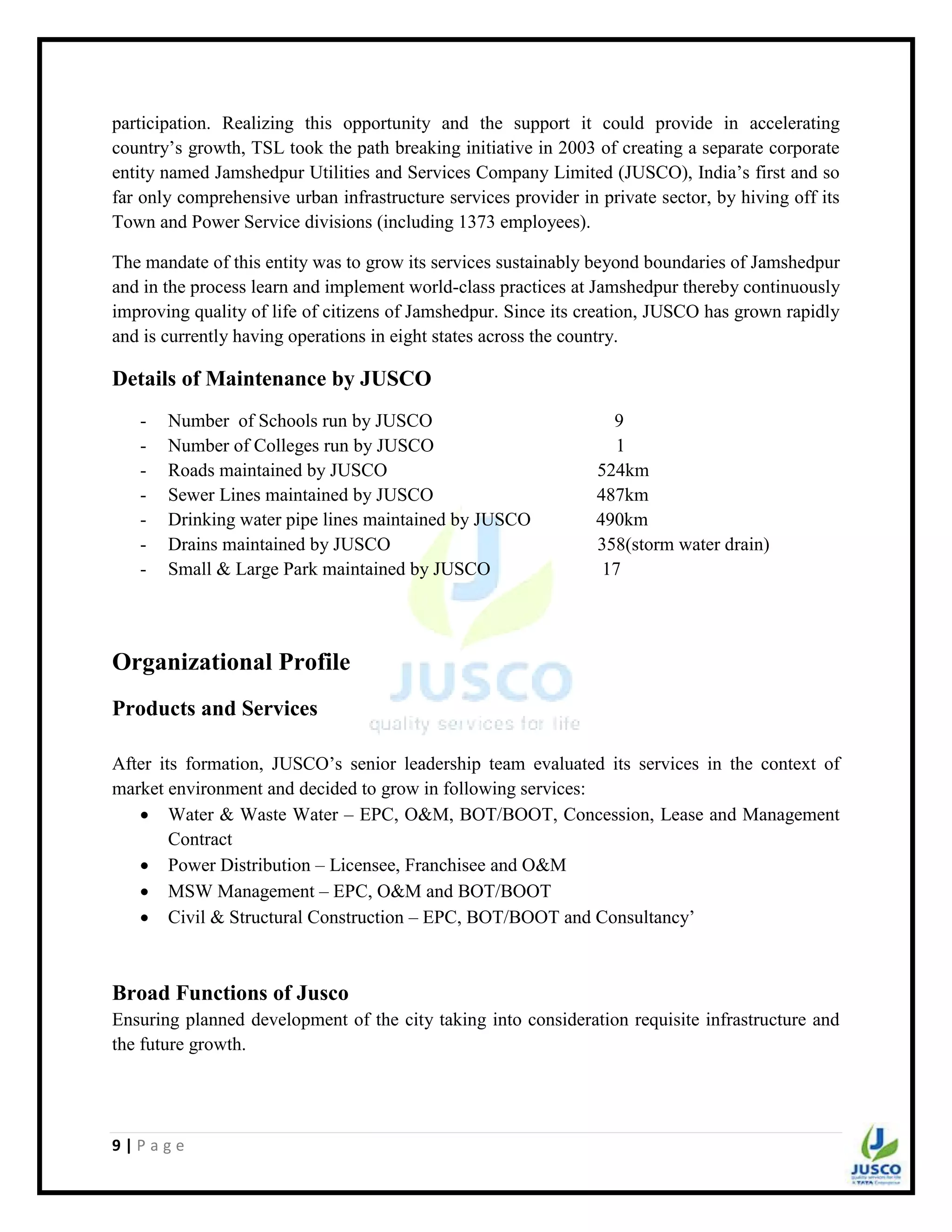
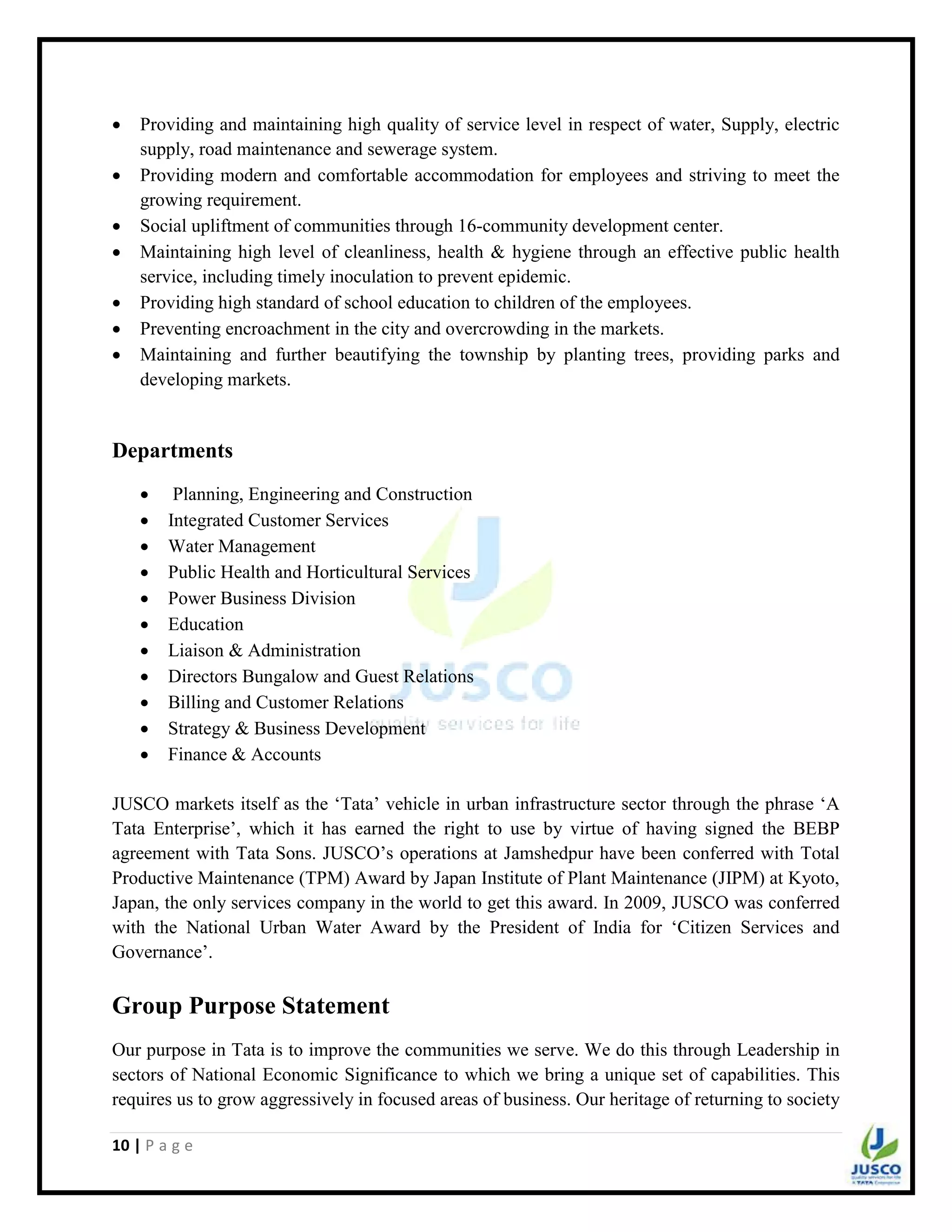
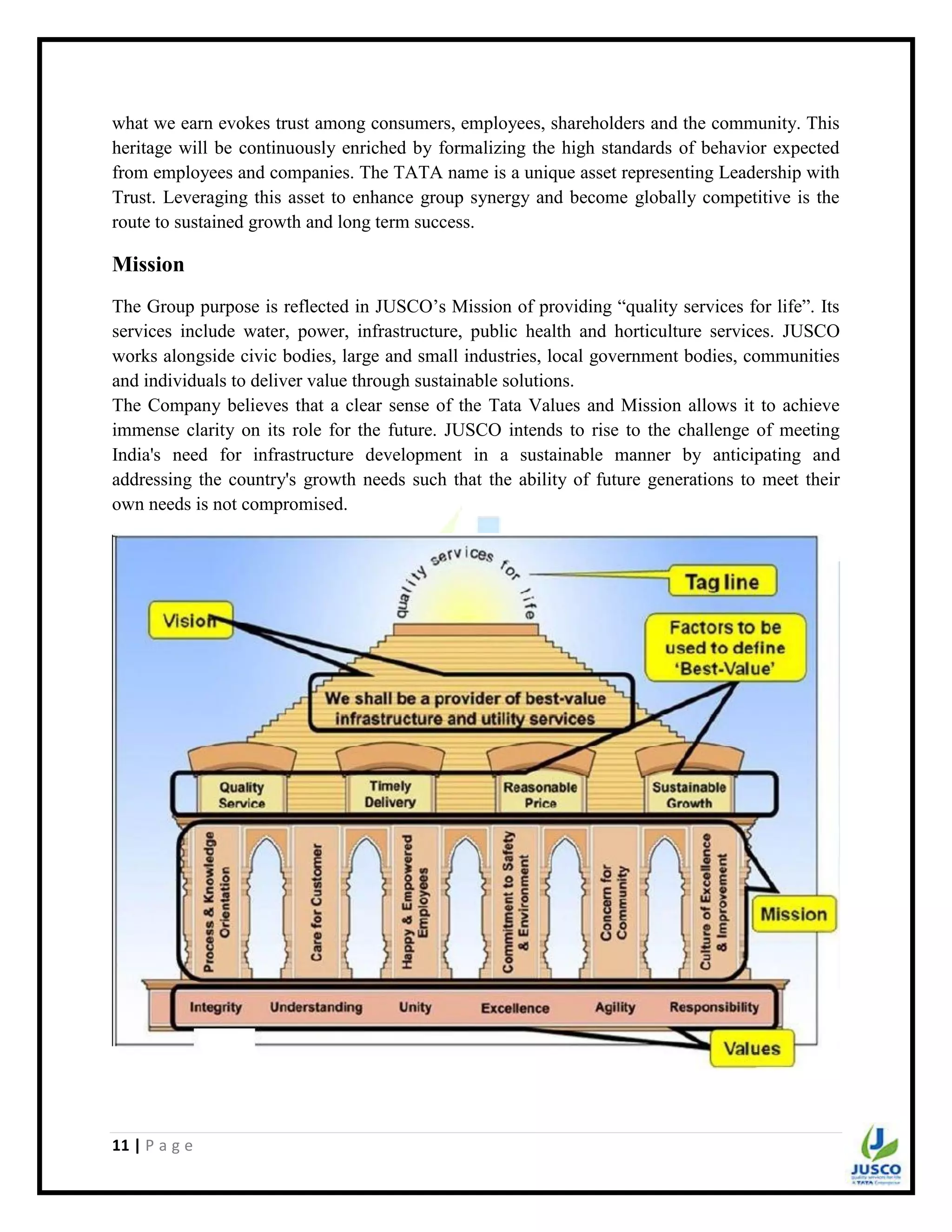

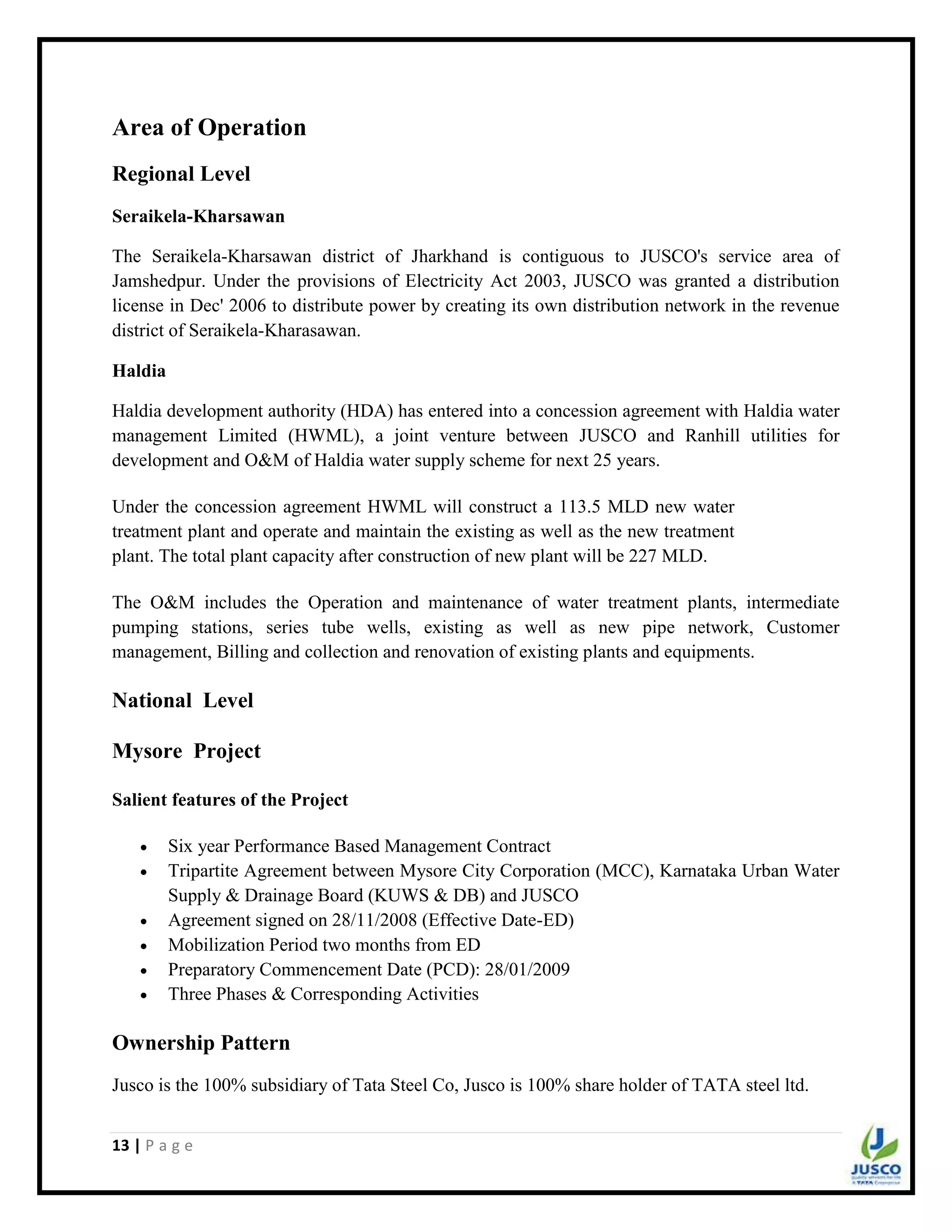








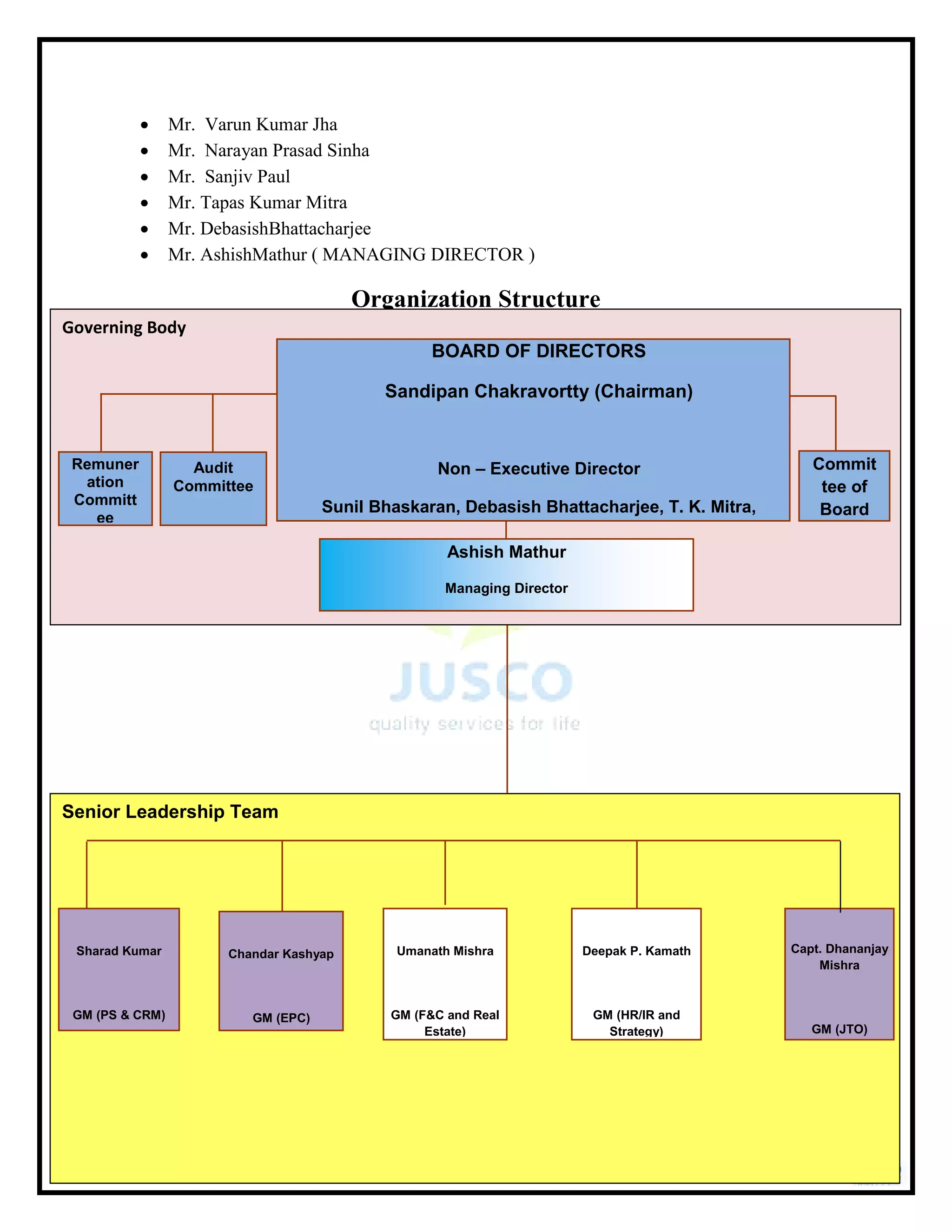



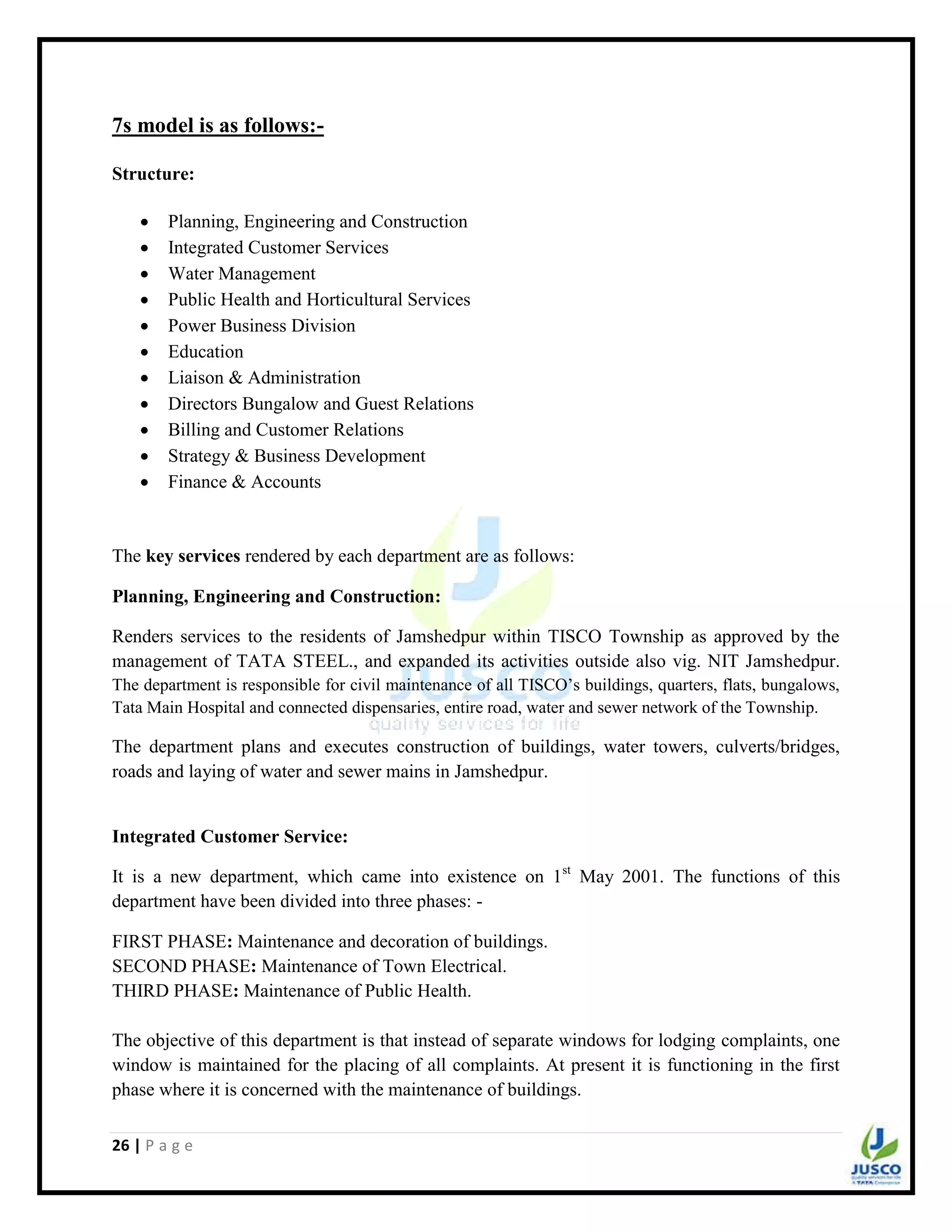
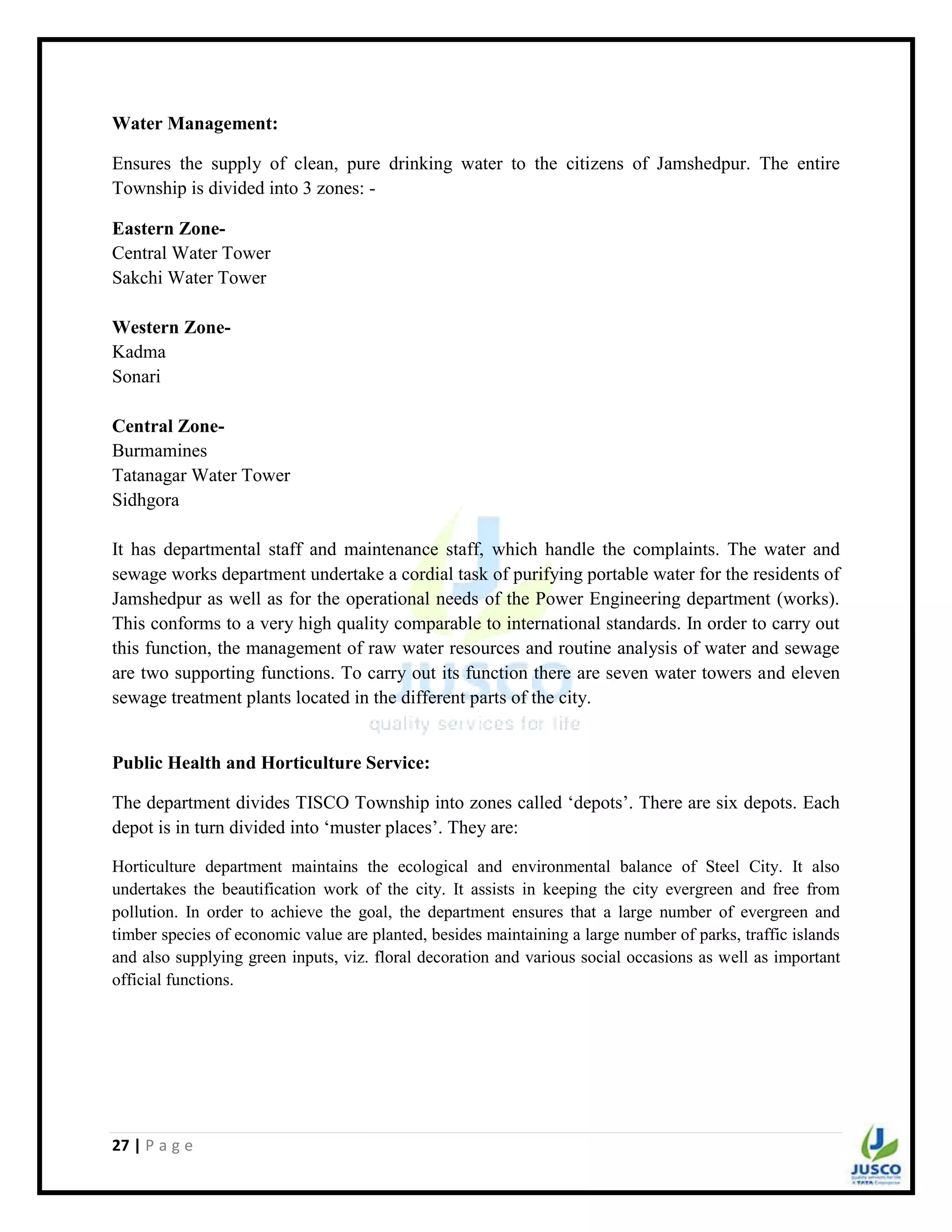


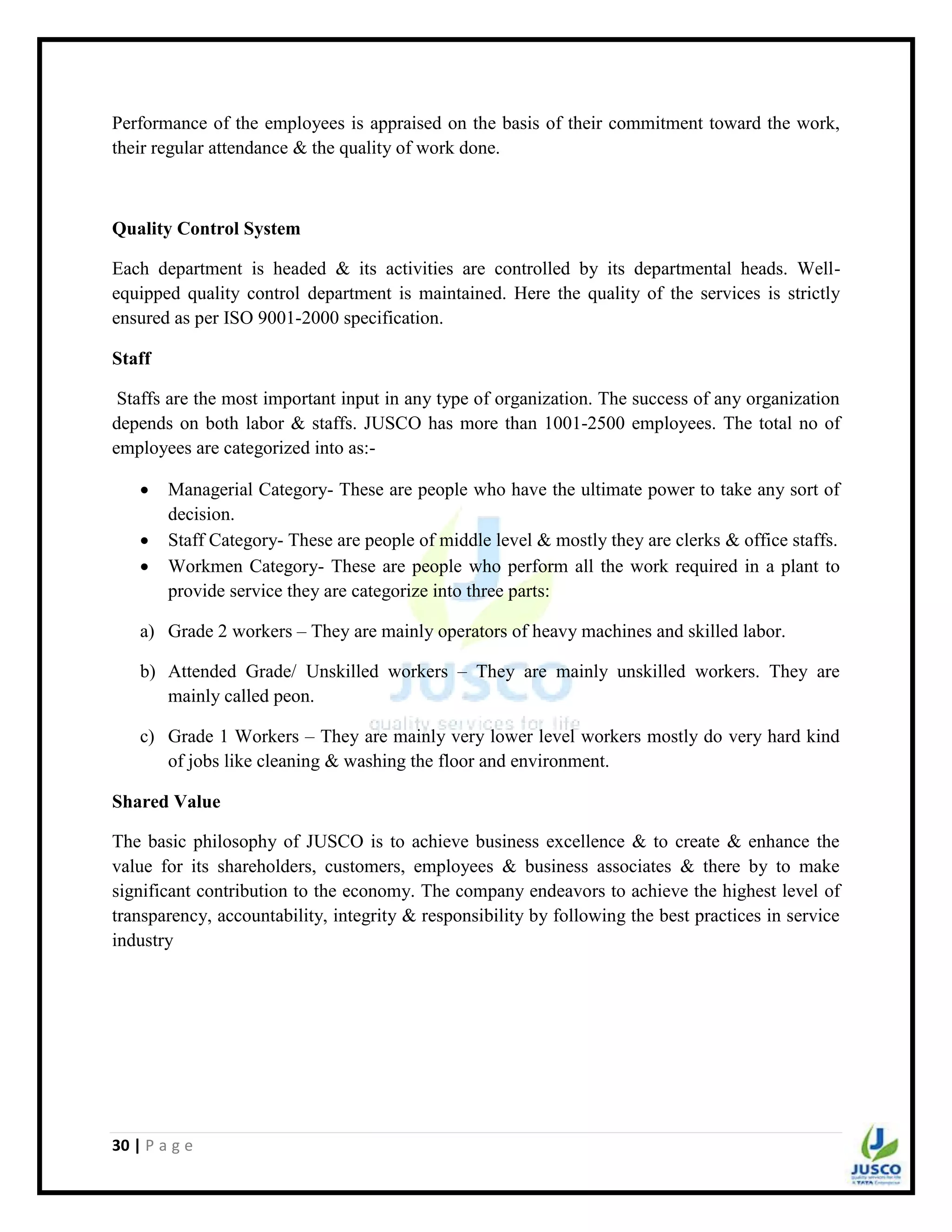

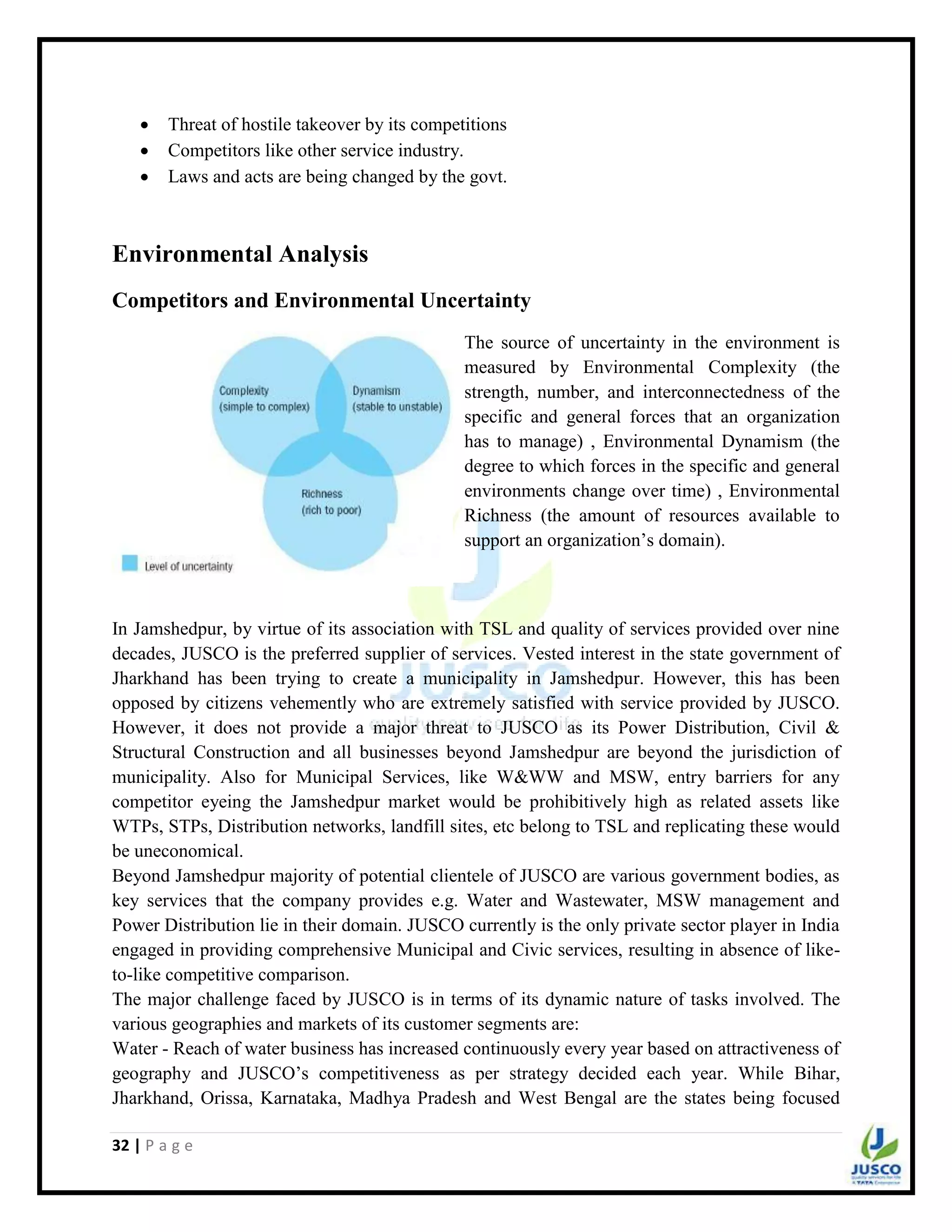
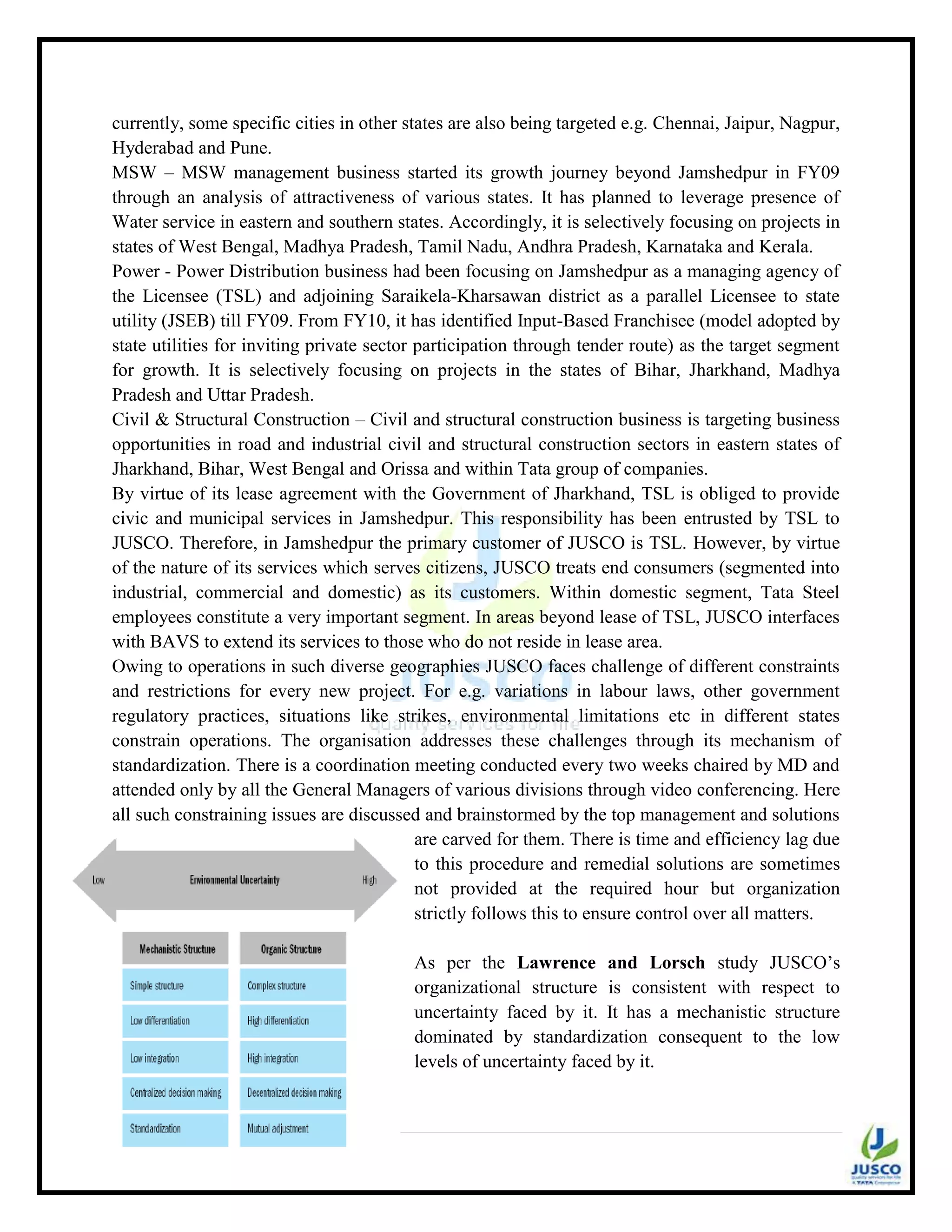
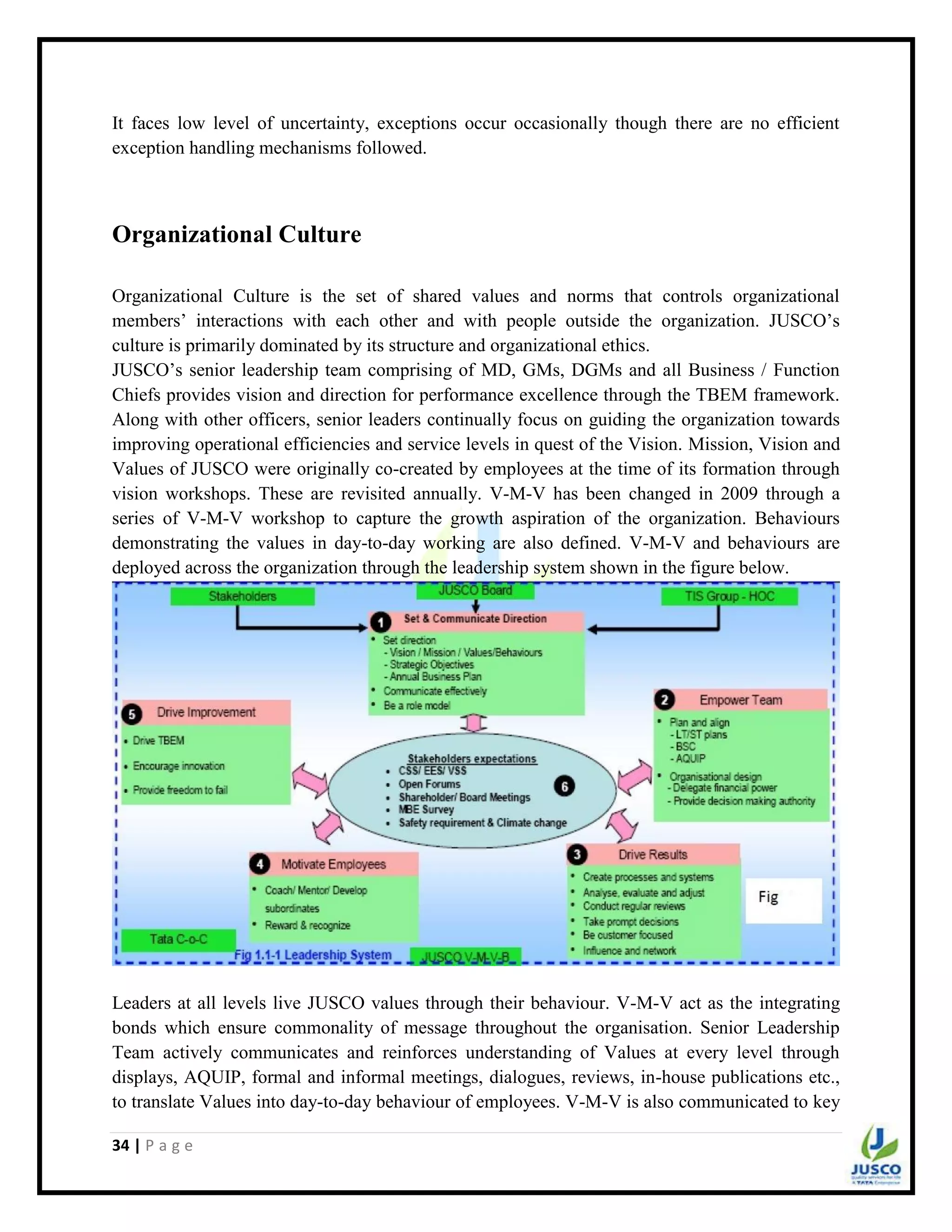

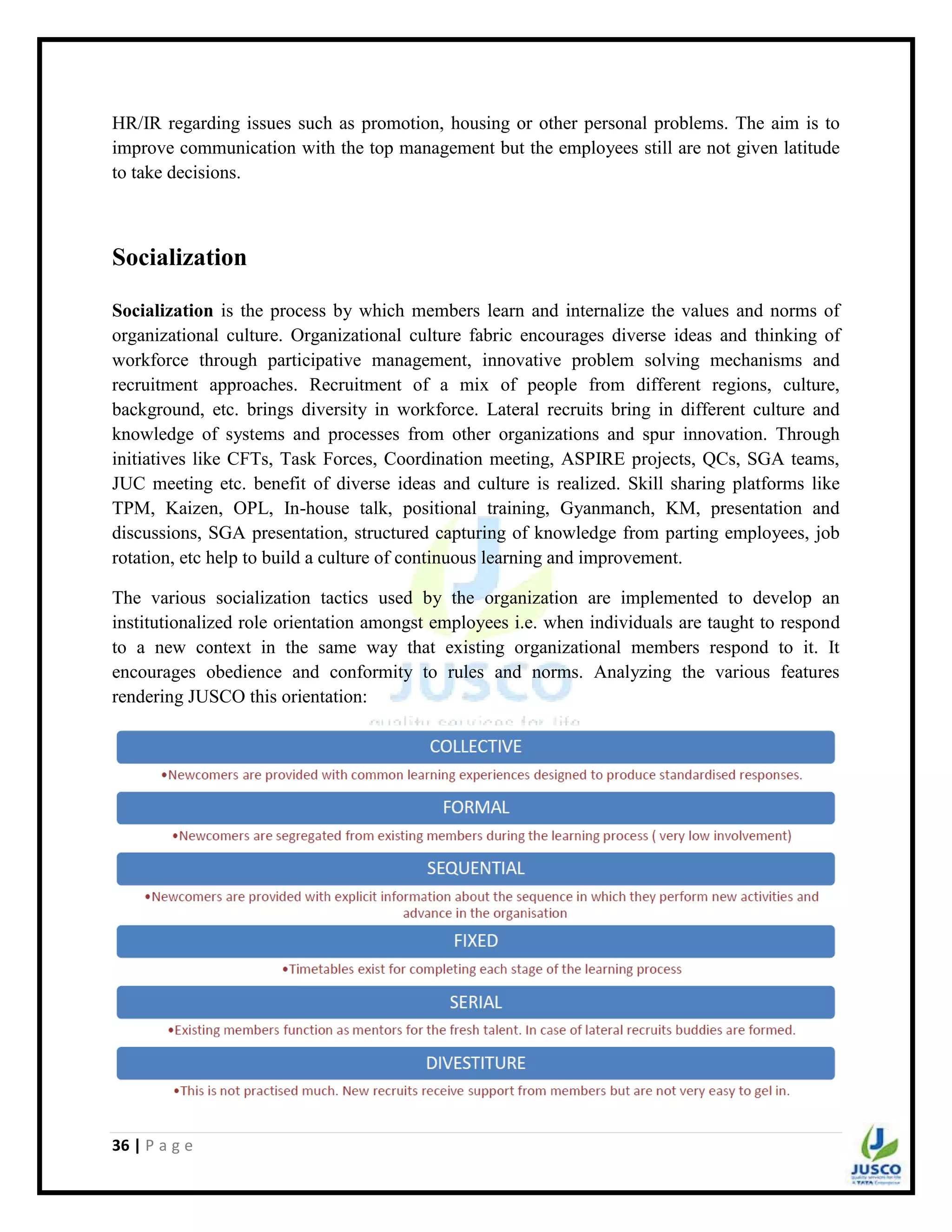

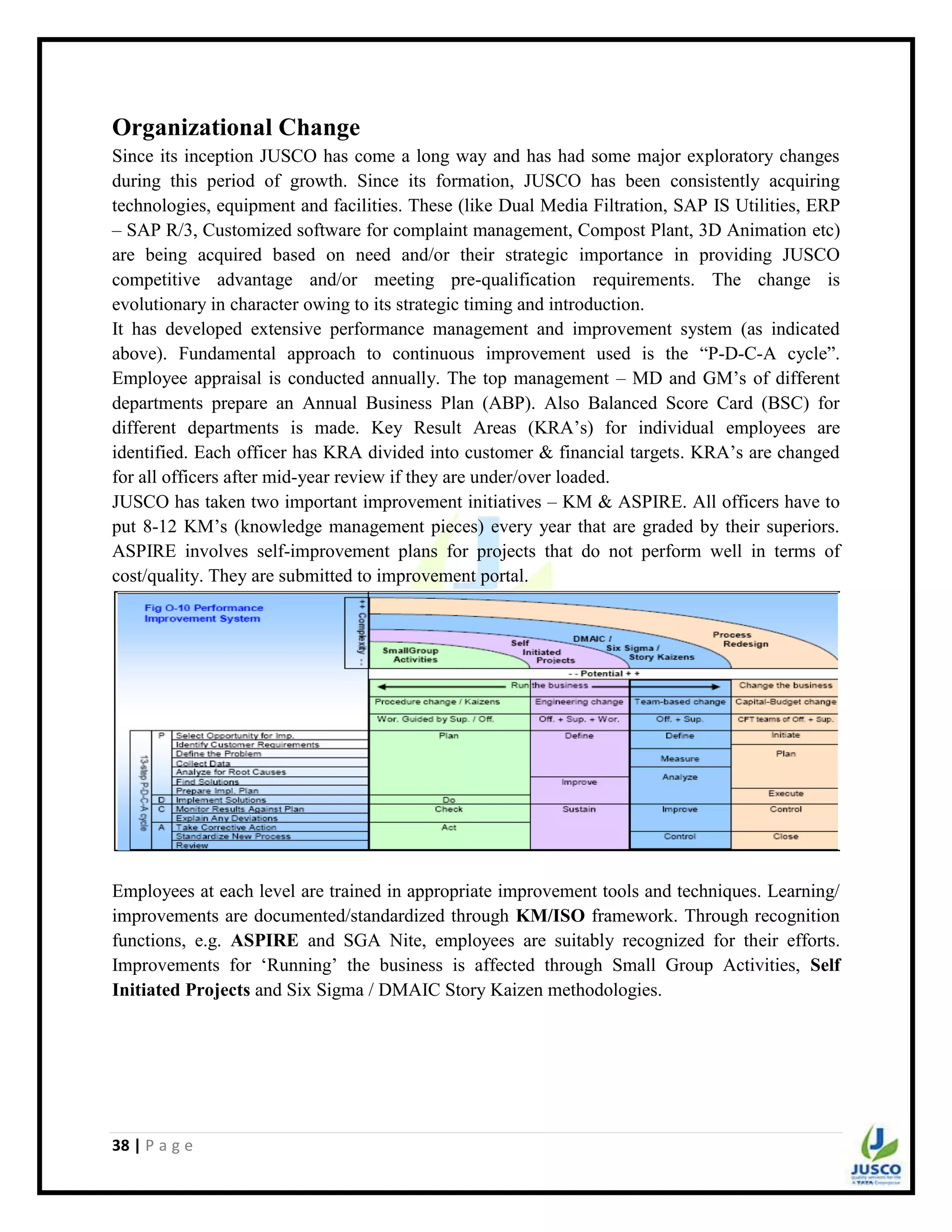


![41 | P a g e
Employee State Insurance Act, 1948 – An overview
Introduction
The Employee State Insurance Act, [ESIC] 1948, is a piece of social welfare legislation enacted
primarily with the object of providing certain benefits to employees in case of sickness,
maternity and employment injury and also to make provision for certain others matters incidental
thereto. The Act in fact tries to attain the goal of socio-economic justice enshrined in the
Directive principles of state policy under part 4 of our constitution, in particular, articles 41, 42
and 43 which enjoin the state to make effective provision for securing, the right to work, to
education and public assistance in cases of unemployment, old age, sickness and disablement.
The act strives to materialize these avowed objects through only to a limited extent. This act
becomes a wider spectrum than factory act, in the sense that the factory act is concerned with the
health, safety, welfare, leave etc of the workers employed in the factory premises only. But the
benefits of this act extend to employees whether working inside the factory or establishment or
elsewhere or they are directly employed by the principal employee or through an intermediate
agency, if the employment is incidental or in connection with the factory or establishment.
Related Legislations: ESI (Central) Rules, 1950 and ESI (General) Regulations, 1950
Origin
The Employee State Insurance act was promulgated by the Parliament of India in the year 1948.
To begin with the ESIC scheme was initially launched on 2nd February 1952 at just two
industrial centers in the country namely Kanpur and Delhi with a total coverage of about 1.20
lakh workers. There after the scheme was implemented in a phased manner across the country
with the active involvement of the state governments.
Objectives:
The ESI Act is a social welfare legislation enacted with the object of providing certain benefits to
employees in case of sickness, maternity and employment injury. Under the Act, employees will
receive medical relief, cash benefits, maternity benefits, pension to dependents of deceased
workers and compensation for fatal or other injuries and diseases.
Definitions
According to Section 2 (m) of Factories Act, 1948, Factory means any premises including the
precincts thereof - (a) whereon ten or more persons are employed or were employed for wages
on any day of the preceding twelve months, and in any part of which a manufacturing process is
being carried on with the aid of power or is ordinarily so carried on, or (b) whereon twenty or
more persons are employed or were employed for wages on any day of the preceding twelve
months, and in any part of which a manufacturing process is being carried on without the aid of](https://image.slidesharecdn.com/89ea888e-8dab-42e0-b703-c74f29d31040-160108185656/75/Awareness-of-ESI-act-among-the-contract-workers-of-JUSCO-41-2048.jpg)
![42 | P a g e
power or is ordinarily so carried on. But does not include a mine subject to the operation of
Mines Act, 1952 or a railway running shed;
According to Section 2 (k) of Factories Act, "manufacturing process" means any process for - (i)
making, altering, repairing, ornamenting, finishing, packing, oiling, washing, cleaning, breaking
up, demolishing, or otherwise treating or adapting any article or substance with a view to its use,
sale, transport, delivery or disposal, or (ii) pumping oil, water, sewage or any other substance; or;
(iii) generating, transforming or transmitting power; or (iv) composing types for printing,
printing by letter press, lithography, photogravure or other similar process or book binding; [lra-
6 ] [ lra-7 or lra-7 ] (v) constructing, reconstructing, repairing, refitting, finishing or breaking up
ships or vessels; (vi) preserving or storing any article in cold storage;
According to Section 2 (h) of The Minimum Wages Act, "wages"- means all remuneration
capable of being expressed in terms of money which would if the terms of the contract of
employment express or implied were fulfilled be payable to a person employed in respect of his
employment or of work done in such employment and includes house rent allowance but does
not include -
(i) The value of - (a) any house accommodation supply of light water medical attendance or (b)
any other amenity or any service excluded by general or special order of the appropriate
government;
(ii) Any contribution paid by the employer to any person fund or provident fund or under any
scheme of social insurance;
(iii) Any traveling allowance or the value of any traveling concession;
(iv) Any sum paid to the person employed to defray special expenses entailed on him by the
nature of his employment; or
(v) Any gratuity payable on discharge
Applicability:
The ESI Act extends to the whole of India.
It applies to all the factories including Government factories (excluding seasonal factories),
which employ 10 or more employees and carry on a manufacturing process with the aid of power
and 20 employees where manufacturing process is carried out without the aid of power.The act
also applies to shops and establishments. Generally, shops and establishments employing more
than 20 employees are covered by the Act. “Shop” according to the Delhi Shops and
Establishment Act, 1954 means any premises where goods are sold either by retail or wholesale](https://image.slidesharecdn.com/89ea888e-8dab-42e0-b703-c74f29d31040-160108185656/75/Awareness-of-ESI-act-among-the-contract-workers-of-JUSCO-42-2048.jpg)

